
EnergyConnect



Published by


EnergyConnect



Published by
What a difference three months can make!
Prime Creative Media
ABN: 51 127 239 212 379 Docklands Drive Melbourne VIC 3008 Australia P: (03) 9690 8766 www.primecreativemedia.com.au enquiries@primecreative.com.au ISSN: 2203-2797
Editor
Katie Livingston
A ssistant Editor
Sarah MacNamara
Journalists Tess Macallan Kody Cook
Art Director
Alejandro
N ational Media Executive
Brett Thompson
M arketing Manager
Radhika Sud
M arketing Associates
Bella Predika, Emily Gray
Amy Boreham
Publisher Sarah Baker
M anaging Editor
Laura Pearsall
Since the last issue of Energy, we’ve seen the Federal Budget deliver major investments in renewable energy development with the $22 billion Future Made in Australia package. This investment has paved the way for further support for a plethora of clean energy projects, including approval for REZs and offshore developments, as well as a string of policy changes to drive the energy transition in Australia.
In the September 2024 issue of Energy, we take a deep dive into some of the key storage and transmission projects that are enabling Australia’s net zero future, and unpacked the research and policies that are underpinning the transition.
Reaching net zero emissions by 2030 involves more than just new renewable infrastructure, it requires coordinated decarbonisation efforts from businesses, communities and governments alike.
This issue looked at how sustainability initiatives from Australia’s largest transmission project, EnergyConnect, are both enabling the clean energy transition and helping the grid itself go green. We also spoke with researchers at the University of Technology Sydney about how new hydrogen storage technology could help decarbonise the transport and energy sectors.
Over in Western Australia, Synergy is undertaking some exceptional work in energy storage, and Energy took a close look the state’s isolated electricity system and the unique challenges that this presents for Western Australia’s transition to renewables.
Consumer energy resources and solar PV will continue to play a critical

to scratch. This is a task that CSIRO’s PV Performance Laboratory is committed to fulfilling, and the organisation shared how the research it has undertaken over the past decade is helping drive successful and sustainable energy transition.
While there can be no transition without transmission, equally, neither can exist without a skilled workforce to deliver and operate the essential infrastructure. This transition presents a significant opportunity for First Nation’s Australians to build long-term careers, and the First Nations Clean Energy Network has identified pathways to empower Indigenous Australians in the energy sector.
I hope you enjoy this issue of Energy, and look forward to bringing you relevant and engaging content for another year
As always, if you have any topics, projects technologies or challenges that you want to see us cover in future issues, I’d love to hear from you.
Katie Livingston Editor
If you have a story idea, tip or feedback regarding Energy, I’d love to hear it. Drop me a line at katherine.livingston@primecreative.com.au , and don’t forget to follow us on social media – find us on LinkedIn, Twitter or Facebook.



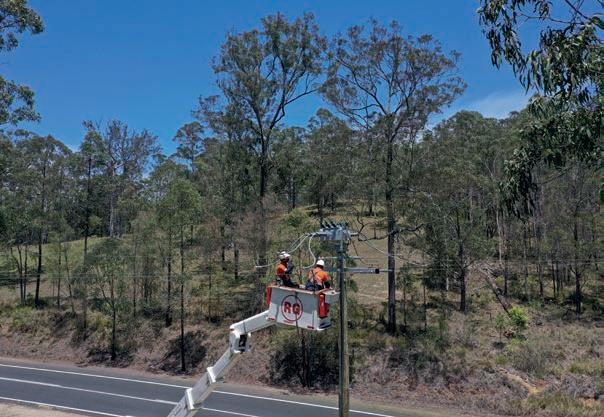

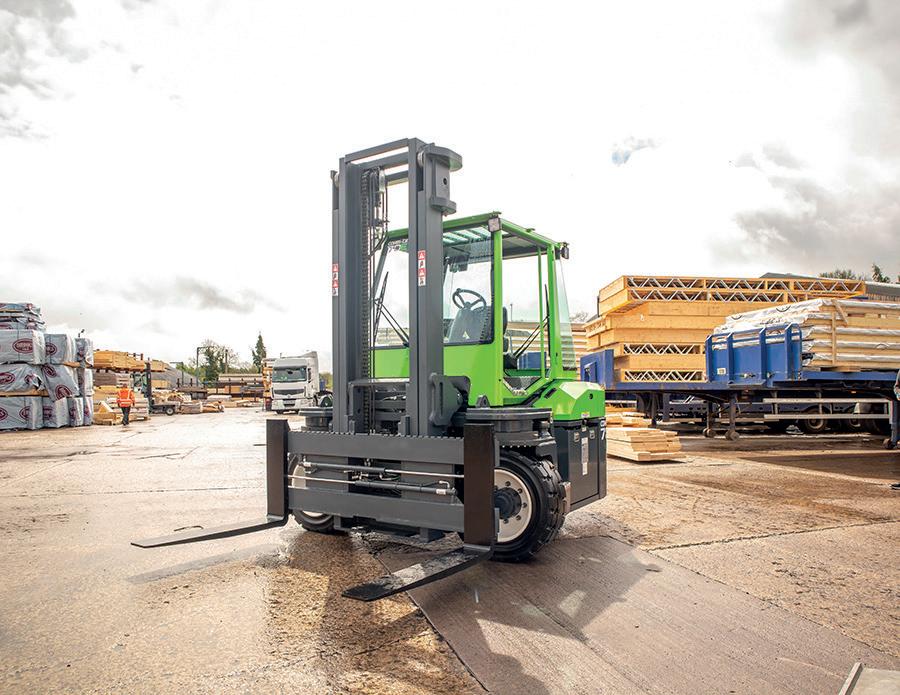

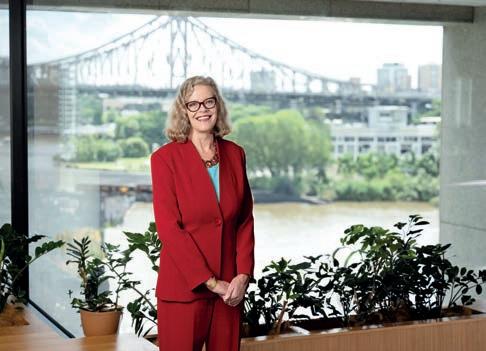
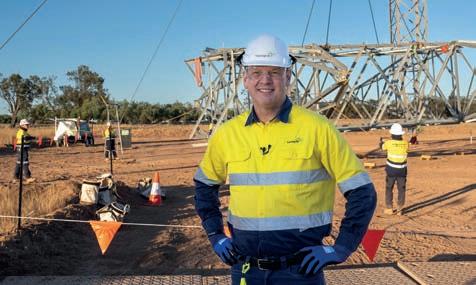

The New South Wales Government has begun to roll out its Heat Pump Hot Water Rebate initiative, a component of the Energy Savings Scheme (ESS).
The rebate is designed to accelerate the adoption of heat pump hot water and other energy-efficient technology across New South Wales.
Heat pump hot water heaters use about one-third of the energy consumed by conventional hot water heaters, lowering greenhouse gas emissions and contributing to environmental sustainability.
The New South Wales Government said it recognised the potential to promote environmentally-friendly consumption. As a result, the ESS specifically supports the installation of heat pump hot water systems with consumer rebates.
The rebate program is designed to reduce the upfront costs of greener alternatives.
New South Wales households and businesses interested in the Heat Pump Hot Water Rebate may access a variety of benefits, including:
• Cost efficiency – by adopting heat pump technology for their hot water systems, you can enjoy lower operating costs and reduced energy bills. The rebate covers a substantial portion of the installation cost, so it’s financially feasible for much of the New South Wales community
• Energy reduction – heat pumps are known for their ability to drastically decrease energy consumption. These reductions align with ESS goals to cut energy usage and extend the life of existing energy infrastructures
• Environmental impact – when you transition to heat pump technology, you contribute to reduced carbon emissions. Heat pump adoptions support statewide and national environmental targets for combating climate change
The ESS was launched in 2009 as part of New South Wales’ effort to enhance energy efficiency and reduce greenhouse gas emissions. The program incentivises the purchase and installation of innovative technologies that lower energy usage.
The government said the ESS initiative has reduced both energy consumption and costs. By the end of 2022, it was responsible for a decrease of 23Mt of greenhouse gas emissions.
By 2030, the energy savings target will increase to 13 per cent. By increasing the target, New South Wales hopes to

reduce 70 per cent of emissions by 2035 and achieve net zero by 2050.
Part of the ESS, the New South Wales Heat Pump Hot Water Rebate provides rebates for eligible New South Wales households and businesses that have an existing electric or gas hot water heater.
The Heat Pump Hot Water Rebate is available to all residents of New South Wales who replace their old electric or gas hot water systems with newer, qualified heat pump models.
The financial incentives come in the form of tradable certificates known as energy savings certificates (ESC). They provide a quantifiable and verifiable record of reductions in energy consumption or greenhouse gas emissions.
Each ESC symbolises saving 1t of carbon dioxide-equivalent emissions through reduced energy use.
Once issued, ESCs can be sold and bought on a special market. There, electricity suppliers and other entities purchase the certificates, which supports their obligations to meet governmentmandated targets.
ESC trading therefore provides a financial incentive to companies and individuals to invest in energy efficiency improvements.
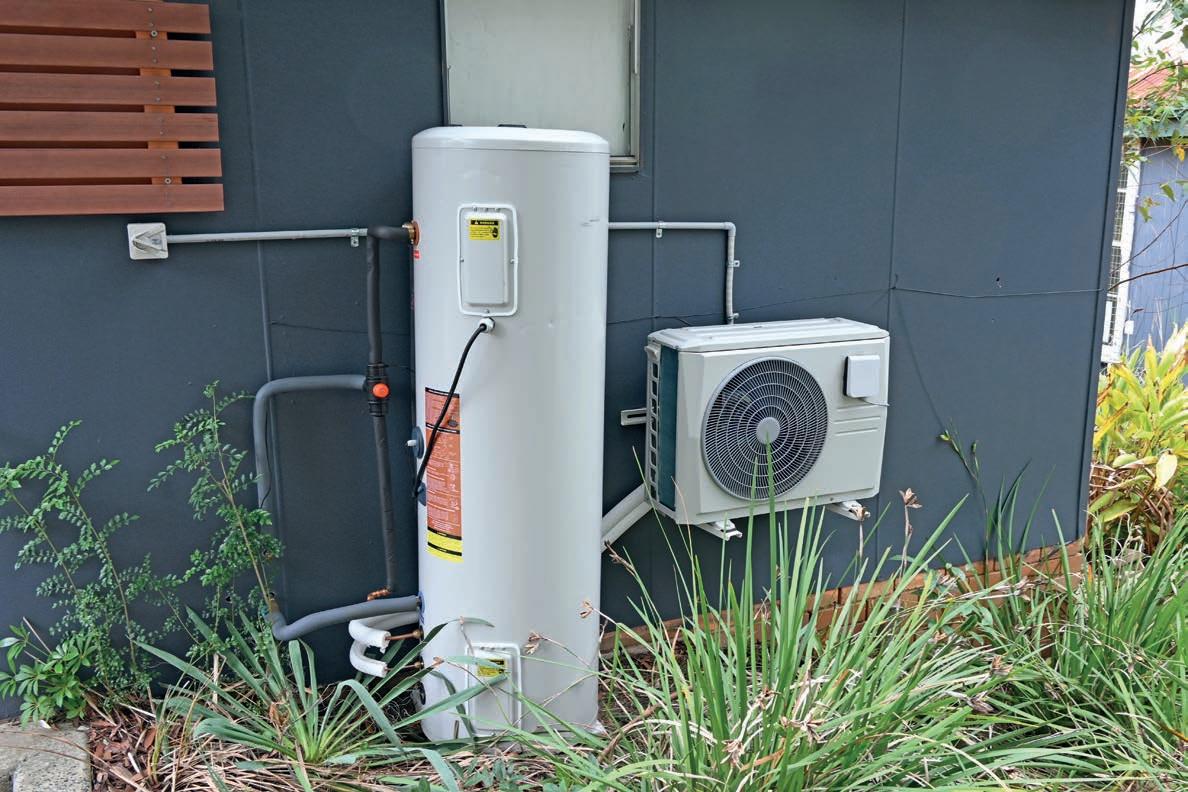


world-class plate processing capability, optimised supply chain solutions with diversified transport options, and a dedicated project management team to help deliver projects on time and to specification.

The Federal Government has released a strategy that outlines how Australia can use its natural and industrial advantages to develop a leading domestic battery manufacturing industry.
This includes making more batteries in areas that best suit Australia’s advantages. The focus is on energy storage systems, battery active materials, manufacturing industry inputs and safe and secure batteries.
The strategy outlines the strategic battery priorities to achieve this:
• Build battery manufacturing
and add value to the nation’s economy
• Build knowledge and skills to create secure Australian-made jobs
• Secure Australia’s place in global battery supply chains
• Lead the world on sustainability, standards and the circular economy
• Bring all levels of government together
• The Department of Industry, Science and Resources said that it consulted broadly to develop the strategy and its actions, and that it will continue to work with industry, government, business and experts to apply it.
New measures in the 2024–25 Budget
• Battery Breakthrough ($523.2 million) to promote the development of battery manufacturing capabilities through production incentives targeted at the highest value opportunities in the supply chain. ARENA will administer the initiative
• Building Future Battery Capabilities ($20.3 million) to enhance industry and research collaboration, including workforce training for battery research, manufacturing, transport and recycling
• Support to deliver the Australian Made Battery Precinct ($5.6 million)




The Clean Energy Council has commissioned an independent report, which found that nuclear power is the most expensive form of new energy in Australia.
Conducted by construction and engineering firm Egis, the review analysed the CSIRO and Australian Energy Market Operator (AEMO)’s GenCost report against the Lazard Review and the Mineral Council of Australia (MCA)’s research into Small Modular Nuclear Reactors.
The report has these key findings:
• The research showed that nuclear energy is up to six times more expensive than renewable energy and even on the most favourable reading for nuclear, renewables remain the cheapest form of new-build electricity
• The safe operation of nuclear power requires strong nuclear safety regulations and enforcement agencies, none of which exist in Australia. Establishing these frameworks and new bodies would take a long time and require significant government funding which would ultimately be borne by taxpayers
• Nuclear may be an even higher cost than currently forecast as waste management and decommissioning of nuclear plants have been omitted by cost calculations in the relevant research available
• The economic viability of nuclear energy will further diminish as more wind, solar and battery storage enters the grid, in line with legislated targets. Put simply, nuclear plants are too heavy and too slow to compete with renewables and can’t survive on their own in Australian energy markets

Transgrid has published its Project Assessment Draft Report (PADR), identifying the combination of solutions required to meet the needs of the New South Wales power system as the state transitions to renewable energy.
Transgrid conducted an Expression of Interest in 2023, which identified 100 possible non-network and network solutions to provide system strength to the New South Wales power system.
After reviewing, Transgrid published the PADR identifying the preferred portfolio of solutions.
The solutions are designed to maintain system security by creating a strong signal – much like a human heartbeat – to help the energy system ride out interruptions and avoid instability.
Transgrid Executive General Manager of Network, Marie Jordan, said, “Our power system is undergoing a high velocity transition. As coal retires and more renewables are connecting, we are facing unprecedented challenges to maintain the security and reliability of an increasingly complex system.
“We have a comprehensive System Security Roadmap in place and one of our key pillars is maintaining the strength of the system so it can operate effectively without coal.
“The release of this report is a big step forward in our planning to
ensure the heartbeat of the grid stays strong throughout the rapid transition,” Ms Jordan said.
Transgrid is undertaking a Regulatory Investment Test for Transmission (RIT-T) process to identify the optimal combination of solutions required to meet the needs of the power system in the coming decade.
The PADR identified potential solutions, including:
• Between eight and 14 synchronous condensers to replace system strength that comes from retiring coal assets and unlock additional renewable generation
• Modifications to several synchronous hydro generators and a future compressed-air energy storage facility
• Contracts with a range of existing hydro, gas and coal generators to ensure they can switch on or operate in synchronous condenser mode when needed
• 4.8GW of batteries with grid forming capability to support the stable operation of new renewable generators
“The future power system must be capable of operating at up to 100 per cent instantaneous renewable energy in the coming decade. To support the amount of wind, solar and hydro required we must invest in a diverse range of options to keep
the system strong,” Ms Jordan said.
“As part of this process, we assessed more than 60 individual non-network solutions and 40 unique network solutions to meet requirements.
“There are so many moving pieces in our energy puzzle and no single solution can meet the need – in fact, dozens of solutions across New South Wales will be required at any one time to keep the system operating securely.”
Transgrid is the first transmission provider in Australia to launch a comprehensive program to safeguard system strength, which is necessary to support the Federal Government’s target of 82 per cent renewable generation by 2030.
“We are acting to ensure the lights stay on as we work to deliver the priority projects and investment to support the New South Wales and Federal Governments’ vision for a clean energy future,” Ms Jordan said.
“Currently our energy system relies on system strength produced by large spinning machines such as coal, gas and hydro generators – which provide a strong heartbeat to keep the grid stable so it can ride through disturbances.
“Renewable sources like wind and solar don’t have the same capabilities and need to follow a strong signal from the network, or they will disconnect, which is why we urgently need new sources of system strength.”

The State Government will fund several projects to help Victorians invest in renewable technologies.
The projects will be funded as part of the Residential Electrification Grants program, helping households make the switch to all-electric.
By phasing out fossil gas and going all-electric, the Victorian Government said that households are expected to save around $1,400 per year off their energy bills or up to $2,700 if paired with solar panels.
The Victorian Government said that more than $4 million will be provided to seven approved providers to deliver 1,875 solar and 1,545 hot water rebates, which will reduce the upfront costs of installing solar and energy efficient heat pumps.
Since 2018, Solar Victoria has provided more than 350,000 rebates and loans to households across the state to install solar panels, energy efficient hot water systems, and solar battery systems.
“We are helping more Victorians make the switch to all-electric homes – cutting
The Australian Marine Complex Common User Facility (AMC CUF) suppo s the renewable energy sector by providing extensive ocean-front assets, services and infrastructure including:
• Loadout and maintenance wharves for cargo receival
• Laydown area for staging and dispatch
• Access to the High Wide Load Corridor for road transpo
• 24 hour manned security with CCTV
Contact us to discuss your next project or to find out more about our capabilities and infrastructure.
info@amccuf.com.au I +61 8 9437 0500 australianmarinecomplex.com.au/cuf
down power bills and investing in a renewable energy future,” Victorian Minister for Energy and Resources, Lily D’Ambrosio, said.
“The Residential Electrification Grants program is increasing solar by broadening the reach and scope of the program to encourage innovation in the use of solar energy.”
Member for South-Eastern Metropolitan Region, Lee Tarlamis, said, “This is part of our commitment to achieving net zero emissions while lowering energy bills and ensuring reliability though electrification.”
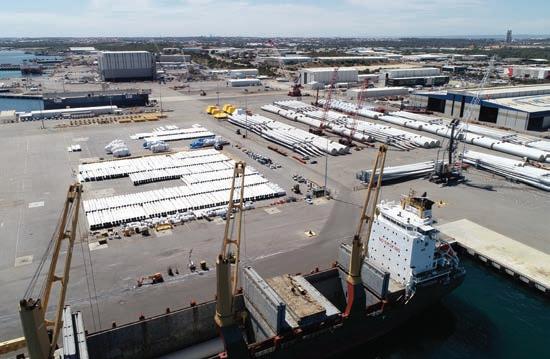

The Federal Government has made a preliminary decision to shortlist the offshore Novocastrian Wind project for the next stage of the feasibility licensing process.
Equinor and Oceanex have been preliminarily offered a feasibility licence for the potential Novocastrian Wind project.
The Offshore Infrastructure Registrar received eight feasibility licence applications across the 1,854km2 zone.
The Federal Government said that only one feasibility licence is being proposed because other applications were for overlapping areas and found to be of lower merit.
If approved, the proposed project could:
• Deliver 2GW of renewable electricity
• Power 1.2 million homes
• Deliver around 3,000 jobs during construction and between 200 and 300 ongoing jobs
• Provide more job opportunities withsuppliers
New South Wales Minister for Climate Change and Energy, Chris Bowen, is expected to conduct further consultation
with applicants and First Nations groups before a final decision is made.
Consultation with First Nations groups, communities, unions and marine users will continue throughout the feasibility licence process, while environmental studies and a detailed management plan is prepared.
As well as providing reliable renewable energy to Australian industry, offshore wind projects will be required to maximise their use of Australian supply chains and closely consult with local industry and workers on their project plans to ensure local workers and businesses benefit from the establishment of this new industry.

project did the most to support the Hunter’s industries and communities while protecting the environment and sharing the ocean.
There are also clear requirements for the offshore wind developer to consult with fishers and avoid, mitigate and offset any impacts on fishing.
If feasibility for the Novocastrian Wind project is proven, the developer can then apply for a commercial licence to build an offshore wind project to generate electricity commercially.
Mr Bowen said that the shortlisted
“The Hunter has been an industrial and economic powerhouse for generations, and my decision is a big step towards providing that powerhouse with reliable renewables,” Mr Bowen said.
“The project I’ve shortlisted offers the biggest rewards for the Hunter and Australia – supporting our workforce and energy security, protecting our environment and sharing our marine space with the people and industries who rely on it today.”


The Federal Department of Climate Change, Energy, the Environment and Water has announced it will partially fund the Hydrogen Zero Emission Maritime (HyZEM) project, designed to drive decarbonisation in the maritime sector.
The project will receive £1.44 million ($AUD 2.77 million) from Innovate UK with a similar sum to come from the Federal Government.
The news was welcomed by Freeport East, a major port in the UK, which commended the significant investment in the international green hydrogen project.
The HyZEM project focuses on developing low-carbon green hydrogen technology for high powered workboats. The Aus–UK partnership was facilitated by Freeport East and includes leading UK and Australian businesses specialising in green hydrogen storage and propulsion technologies.
The project’s goal is to reduce the risks of deployment of new technology and accelerate the adoption of marine green hydrogen.
The HyZEM project also aims to demonstrate practical applications for green hydrogen storage and propulsion on vessels, including bunkering technology, port storage, refueling infrastructure, and how it will support local supply chains.
Freeport East said it aims to support deployment in the regions’ ports, with the number of tugs, workboats and offshore wind vessels in Harwich and Felixstowe making these technologies of particular relevance.
The international collaboration is designed to support the development and adaptation of new climate-friendly, zero-emission technologies and advance the use of green hydrogen in the maritime industry in both Australia and the UK.
The partnership includes Steamology as lead, National Composites Centre (NCC), Duodrive Limited, Chartwell Marine Limited and The Offshore Renewable Energy (ORE) Catapult. The Australian sister project will be led by Rux Energy Australia.
The diversity of the group is expected to help drive the adoption of green hydrogen through the unique expertise of each partner. Steamology brings to the table its zero-emission hydrogen steam turbines, while Duodrive Limited brings expertise in electric contra-rotating marine propulsion. CTV designer Chartwell Marine Limited is also involved, working to improve vessel efficiency.
Through the project, Freeport East and ORE Catapult will further support regional innovation, as well as building collaborations between subject matter experts, global industry and academia in offshore renewable energy.
The NCC and Rux Energy’s Australian consortium are expected to lead next generation hydrogen storage systems development, dovetailing Rux’s breakthroughs in advanced nanoporous materials with innovations in carbon composite tanks, delivering step changes in efficiency, safety and costs for high powered work boats like tugboats and crew-transfer vessels.

Managing the quality and efficiency of Australia’s solar cell technology could be key to a successful and sustainable energy transition.
With CSIRO’s recent GenCost report confirming that renewables remain the lowest cost new build electricity technology, and the Federal Government announcing a $1 billion SunShot program to reinvigorate Australia’s solar manufacturing industry, photovoltaics (PV) continue to be a critical part of Australia’s energy transition.
However, to ensure that this renewable energy source fulfils its potential for generations to come, it’s fundamentally important that effective structures are put in place to manage the quality and performance of solar technology. This is where the research taking place at CSIRO’s PV Performance Laboratory (PVPL) comes in.
CSIRO Principal Research Scientist, Dr Chris Fell – who played a key role in launching CSIRO’s PV research program – said, “We need to stay focused on the quality and performance of imported solar modules but extend that attention to the proposed 20 per cent of the Australian market that is expected to be manufactured locally.
“Competing with imported products directly on price will be challenging, so quality will be crucial to the long-term success of the SunShot initiative.”
A brief history of CSIRO’s PVPL Australia’s research infrastructure is a fundamental part of the scientific ecosystem, and as the national science agency, CSIRO is a steward of much of that infrastructure – providing the evidence base to guide technical innovation and expansion and inform the allocation of public and private investment.
The early work to establish CSIRO’s PV Performance Laboratory took place between 2005 and 2010. The aim was to enhance the credibility of Australian researchers working on new organic solar cells by ensuring that they were using internationally agreed methods to measure and report the performance of their devices.
Measurements of solar cell efficiency can be straightforward if accuracy is not a concern, and this situation had led to some suspicion that results from around the world were exaggerated to secure
lucrative grants for commercialisation or further research.
“As the price of mainstream solar PV came down, it became clear that CSIRO could apply our skills to commercial products,” Dr Fell said.
“In 2012, we designed a PV Outdoor Research Facility when there were very few of these in the world, with 60 testbeds for current-voltage testing of commercial scale PV modules. In 2013, we purchased our first solar module flash solar simulator – sometimes known as a ‘flash tester’. By 2015, our solar measurement ground station was deemed so comprehensive and accurate it became a site for the global Baseline Surface Radiation Network (BSRN).”
The logical next step for CSIRO was applying to become the first PV measurement facility in the southern hemisphere accredited to the IEC 17025 laboratory competency standard, which places auditable requirements on the laboratory relating to governance, personnel, resourcing, equipment, procedures, training, supervision, authorisation, impartiality and more.

One example of these complex requirements is that the PVPL must regularly calibrate 32 instruments with external labs accredited to international standards. Additionally, the lab uses more than 50 instruments that don’t require calibration, and there are 68 sources of measurement uncertainty that must be understood and quantified.
“We believe that PVPL’s status as an IEC 17025 accredited laboratory is a clear indicator of the world-class services we can provide to Australian solar industry stakeholders, as well as other domestic and international research institutions,” Dr Fell said.
Armed with this accreditation, CSIRO was invited to join the handful of PV measurement labs around the world that have been trusted to endorse new solar cell efficiency world records. Dr Fell now also represents Australia in the International Electrotechnical Commission Technical Committee 82, responsible for maintaining the international standards for solar PV.
National laboratories play a crucial role
Australia boasts the highest uptake of rooftop solar in the world. It is now the country’s second largest source of renewable electricity generation, and its contribution to the grid is forecast to more than triple in the coming decades.
However, Australia’s love of solar extends well beyond urban rooftops; it also encompasses remote megawatt solar farms and cutting-edge solar cars hurtling along roads in the Australian outback.
This recent embrace of solar’s potential across the Australian context – and the groundbreaking work that is currently taking place to develop the next generation of technologies like perovskite PV – has been driven and supported by robust, evidence-based research to measure the quality and performance of solar cells.
By 2020, CSIRO’s PVPL cell measurement laboratory had verified the performance of countless researchscale solar cells, including two new world records.
The module testing laboratory had measured more than 1000 solar panels, including critical quality control for six utility-scale solar power plants and more than a dozen small companies.
Meanwhile, the PV Outdoor Research Facility had underpinned
internationally published research to better understand the role of the solar spectrum on the energy yield of solar PV; and had made measurements for a consumer advocacy magazine and several companies developing ancillary technologies such as solar coatings and passive cooling schemes.
“The ongoing work of measuring cell efficiency might not always be a headline grabber,” Dr Fell said.
“But it’s a vital part of the technology chain for many reasons – not least the fact that inaccurate or exaggerated results can lead to false promises, misdirected funding, and loss of trust in the industry.
“With new Australian PV manufacturing on the near horizon, quality has never been more important to the Australian solar industry.”
Dr Nikos Kopidakis, PV Cell and Module Performance Team Lead with the US National Renewable Energy Laboratory (NREL) said that national laboratories and science agencies like NREL and CSIRO are uniquely placed to conduct this kind of research.
“Accredited labs that measure and rate solar PV module performance are essential for supporting the PV industry,” Dr Kopidakis said.

“While collaboration is key in the renewables sector, precision performance measurement is the type of work that is best suited to a national facility. It’s unlikely to be a priority for university researchers, and private companies can’t justify the direct investment. They couldn’t spend an entire day measuring two modules like one of our researchers would do.”
solar
Successfully navigating the energy transition is a key issue both within Australia and around the world. Reliable and actionable energy research will be critical in supporting that transition.
As well as being well connected to the NREL in the US, CSIRO also collaborates closely with the European Commission’s Joint Research Centre, the organisation tasked with research to support the goals of the European Union and the European Green Deal – one of which is supporting the rapid development and deployment of solar PV.
JRC’s activities include developing standards for photovoltaic products,
with a focus on quality and performance; providing a focal point for research on PV performance assessment; providing an independent reference for research projects, laboratories, and industry; coordinating harmonisation across the sector; and sharing best practice.
In Australia, CSIRO’s longstanding track record of productive collaborations with universities, research institutes, industry, and governments position it well to take a similar leadership role in the solar energy space over the coming years.
“What I’m trying to create through the work of the PVPL is an industry framework to support sustainable solar manufacturing in Australia,” Dr Fell said.
“We need an industry that embraces innovation but is also robust, evidencebased, and can stand the test of time.
“As the national science agency, our job is not to cover every base ourselves. Instead, we need to support and foster growth within the industry through collaboration, the provision of complementary services, maintaining key infrastructure and the promotion of industry standards that prioritise quality and reliability.”
Battery storage can help remote communities tackle energy insecurity, access cheaper power and reduce their carbon emissions, but transitioning these towns to renewables requires purpose-built solutions.
As many of Australia’s remote and First Nations communities are either on the fringe of electricity networks or separated from the grid entirely, they are often dependent on diesel generators where fuel supply can be unreliable or prepaid power services that lead to constant outages.
In addition, frequent extreme weather conditions can both increase their reliance on heating and cooling services and cause long-term disconnections.
Battery storage presents an opportunity for these communities to build greater network resilience while reducing their energy costs and emissions. However, their remote locations and harsh climates create several barriers that need to be addressed before they can transition to renewable energy.
Mictronix Power Systems (MPS) Director, Anthony Micallef, sheds light on these challenges and discusses the technology required to tackle them.
Off the beaten track
Before any battery system can be installed, the first challenge is often gaining access to the site.
“A lot of the time, these places are really remote; the roads are very rutted, especially up north, and there are parts of the year that you just cannot get there,” Mr Micallef explained.
Many battery systems come in containerised solutions, which are prefabricated to make installation easier. However, this means that these systems are quite heavy and need to be
transported using forklifts or cranes.
As access is an issue for these communities, a system that can be easily transported and installed without special equipment is required.
“You need things that can be moved by local people, and not heavy equipment, which means breaking the system down and then putting it back together on site,” Mr Micallef said.
“We try and avoid anything that involves software ... our modules have pluggable connectors and can be assembled with regular tools and don’t require any updates.”
Communities are often reliant on government funding for both the installation of new systems and the repair or replacement of damaged infrastructure, and Mr Micallef said that they could sometimes have to wait long periods of time for a failed system to be repaired or replaced.
As many remote and First Nations communities are also home to extreme temperatures, these conditions need to be taken into account to prevent a battery storage system from failing.
Mr Micallef explained that batteries have a temperature range that they are designed to operate in, and they will fail if they are pushed outside that range.
“The harder you push the battery, the more it heats up, and the hotter the temperature is, the faster the batteries degrade.
“We build a robust battery and we under promise and over deliver on what it can do so that you’re not
pushing into the limits all the time,”
Mr Micallef said.
“We use lithium iron phosphate cells, which don’t have cobalt in them. So, when they fail they don’t create a fire event. Whereas lithium cobalt oxide batteries just burst into flames if you overcharge or damage them.
“We also build redundancy and resiliency into the system design itself. Each battery is self-managed to protect from conditions outside of the allowable operation range, and if one of them fails then the [system] could still run just off one battery.”
Made in Australia, for Australia
Supported by MPS distributor, R&J Batteries, Mr Micallef’s goal is to ensure that affordable renewable electricity is available to everyone who needs it, regardless of location.
With a focus on off-grid solutions, Mr Micallef designed MPS from the ground up for the Australian market.
“International batteries that meet the standards in different countries might need to be [adjusted] for us. I built [MPS’ solutions] to suit Australian’s climate and our manufacturing. It might work for overseas markets, but it’s built for us,” Mr Micallef said.
“We got a full support network all the way from manufacturing through to the end user. R&J has staff who are ex-installers so they understand the product and how to support it.”
“I’ve got a really good team of people to help me make the product bigger, better and support long-term sustainable growth.”
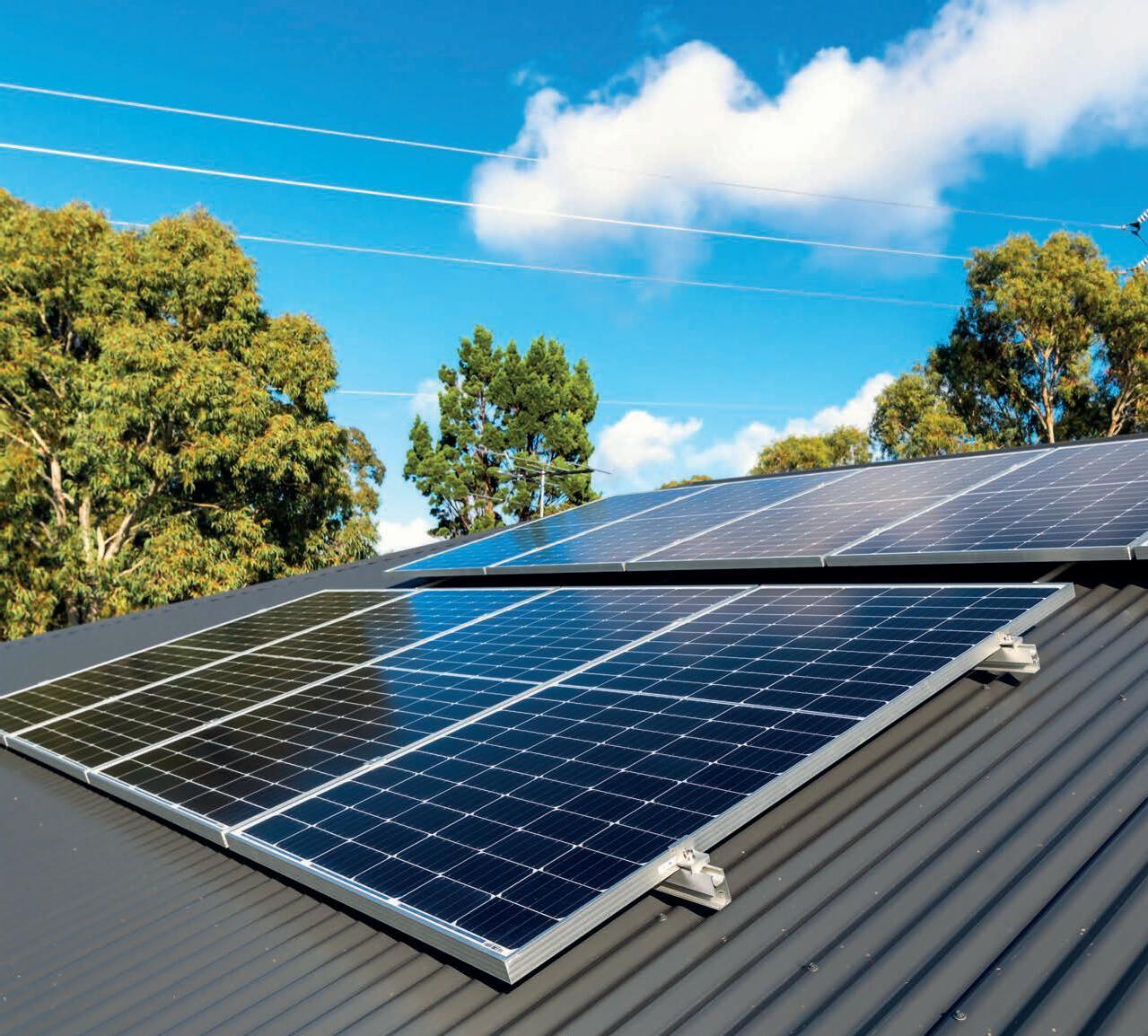






As one of the largest isolated power systems in the world, Western Australia’s energy grid has to tackle some unique challenges in order to successfully transition to renewable energy.
Western Australia is home to world-class solar and wind resources, abundant gas supply and a wealth of battery metals. However, as its grids are isolated from the rest of the country this presents both challenges and new opportunities for the state. Synergy Executive General Manager, Future Energy, Kurt Baker, shares how battery energy storage systems (BESS) are helping the state navigate this transition.
Large-scale battery storage offers an opportunity to provide long-term system stability and support additional renewable
generation. To achieve this, Synergy has three major BESS projects in the pipeline, with one already operational and two under construction.
In June 2022, the Western Australian Government announced that the Collie Power Station is set to be retired in late 2027, followed by the Muja D power station in late 2029, which would remove a combined 1,127MW of electricity generation from the South West Interconnected System (SWIS).
To help replace this capacity, Synergy
is delivering an additional 410MW of renewable generation, backed by 1,100MW of energy storage infrastructure.
Synergy Executive General Manager, Future Energy, Kurt Baker, explained that in order to deliver on these projects, Synergy established a new business unit in 2022 called Future Energy, to lead the development of this renewable generation and storage infrastructure, from concept, pre-feasibility and feasibility, through to execution and operation.
“The challenge we have on our hands, or the opportunity, is to deliver those programmes of investments,” Mr Baker said.

“We’re putting in 1,100MW of additional storage to assist with the retirement of our coal plants. This storage will both help to soak up the rooftop solar generated during the day and timeshift that into the evening peaks. And to help contribute to keeping the system reliable and stable.”
Mr Baker said that as Western Australia’s grid operates differently from the way in which the National Electricity Market (NEM) operates in the rest of the country, this means that the state has to take a unique approach to its energy transition.
“The way we’re set up over here in Western Australia is that while we have
some similarities to the NEM – for example in that we have the AEMO as our market operator – the Wholesale Electricity Market (WEM) operates a little differently.
“In the NEM you have many different transmission systems, which are owned by different parties. Here, we only have one party, which is Western Power who are also owned by the State Government.
“In terms of Synergy itself, we do everything generation and retail. We are a government trading enterprise, but we are also one of many market participants in the generation and storage side of the market. One of the unique characteristics
of Synergy is that we’re the only entity that can actually sell to the residential customers here in Western Australia,”
Mr Baker said.
There are two separate electricity grids in Western Australia, the North-West Interconnected System (NWIS), which covers the north-western part of the state and the South-West Interconnected System (SWIS), which is the main grid and covers the south-western part of Western Australia. Western Power owns and operates the transmission and distribution infrastructure within the SWIS. Synergy is the generator and retailer of electricity in the SWIS.

is a fraction of the size of the NEM, and completely isolated from the rest of Australia.
“Unlike the NEM, where you’ve got transmission networks that connect each state together, we’re all on our own here in Western Australia.
“We’ve got abundance of wind and solar resources, which is a great opportunity for us. But that also brings about challenges in managing the overall system.
“There is lots of sun during the day, but once that sun goes down, that generation associated with that sun disappears. This means we’ve got a big differential between demand on the system during the middle of the day, when the sun is shining, versus the peak periods.
“We also don’t have geographical diversity. In the NEM, if the sun stops shining because the clouds come over in Queensland, then there might be sun down in New South Wales and because the transmission lines are interconnected you can move electricity from state to
the system here. So generally, if it’s not windy, it’s not windy everywhere on our system.
“Rooftop PV is also being installed at a great rate, which is excellent for the decarbonisation of the system.
“However, all that electricity that gets generated during the day needs to be soaked up, and then we need to replace it when the sun goes down at night.
“We want to support customers to continue to put solar on their roofs. It’s generating the renewable electricity, which is great for the energy transition and decarbonising the energy system.
“By installing the battery energy systems, they soak up the rooftop solar produced on people’s homes and can then time shift energy to the peak period, so that we can then withdraw that energy from the batteries to support the peak load on the system.
“Battery energy storage systems also help contribute to the Essential System Services, which help keep the electricity grid in a safe, stable, and secure operating state.”
To date, Synergy has completed one major BESS project – Kwinana Stage 1 (KBESS1) – and has two more in the pipeline; Kwinana Stage 2 (KBESS2) and the Collie Battery Energy Storage System (CBESS).
“Our first one was what we now call KBESS1, which is 100MW/200MW/h or, in other words, two-hour storage. We completed that in September 2023, but we were about halfway through the construction of that particular system when the State Government made its announcements in 2022, which lead us to launch into KBESS2,” Mr Baker said.
“As the name suggests, KBESS2 is pretty much next door to that existing facility, but it’s a 200MW/800MW/h, so it’s a four-hour battery. This one will be complete in October this year.
“The next one underway is CBESS, which is 500MW/2,000MW/h. So that project, like KBESS 2 is on track, on schedule and budget.”
Mr Baker explained that both KBESS2 and CBESS are schedule-driven, as the overall system in the state has a need

be completed.
“Demand for electricity is growing at even greater rates than initially thought, which results in these projects having pressure to deliver on time,” Mr Baker said.
In May 2024, Synergy awarded a $160 million contract to SCEE Electrical to undertake civil, electrical and major equipment installation works for CBESS.
“We’ve completed all the all the early stage earth works for that particular project, so we’re pleased to say we’re off and running,” Mr Baker said.
Synergy also announced in January 2024 that it had reached another milestone in the delivery of KBESS2, having completed the installation of containerised battery systems.
Mr Baker said, however, that with the three batteries combined, Synergy was still 400MW shy of its 1100MW target.
“Now we’re investigating what our next project will be. We’ve got quite a good pipeline of storage projects, and like all infrastructure projects, they’ve got challenges. But we’re pleased to
say we’ve been able to navigate our way around those various challenges successfully so far to get these things delivered on time,” Mr Baker said.
Mr Baker also said that another focus area for Synergy is to support the transition with distributed energy resources (DER).
“We’re doing the work to grow our capabilities, so that we can orchestrate those assets in customers’ homes and help customers contribute to keeping the system stable, and help them get better value out of systems they’ve got installed in their homes. So, it’s complementary to the large-scale storage as well.”
Despite the positive outcomes for the BESS projects, delivering these works was not without its challenges, which required exceptional problem solving from Synergy.
“For storage projects, when you’re trying to deliver those as quickly as you can, one of the challenges is securing long lead items, which is the batteries themselves, the battery modules, and the inverters,” Mr Baker said.
“One of the initiatives that we took is we engaged with the battery inverter market early and then put our supply arrangements in place so that we could essentially forward book production slots for batteries and inverters before we finished fully designing out the remainder of the projects.
“This also helped us build the relationships with the suppliers early in these projects, which allowed us to work more closely together with them.”
Mr Baker explained that another challenge for Synergy was securing the resources and capability needed to deliver the projects.
“The initiative that we took there was to approach these projects with an integrated project management team, which really means we’ve got a combination of Synergy people and engineering partners, and put together a project team to do both engineering and project management.
“In the interest of making sure that we deliver these projects as quickly as we can, we’ve been trying to engage organisations, partners and people who are aligned to our objectives, with our plan as much as possible. If you can get the right motivated people who are all aligned with a common purpose
and objectives, then you can just about overcome anything,” Mr Baker said.
Mr Baker notes that this approach helped Synergy to tackle some major obstacles with KBESS2.
“We were due to ship our inverters out of Spain, but not too long after a lot of geopolitical tension was created across the Suez Canal and we couldn’t get our inverters to come through the standard shipping routes.
“That was going to set our delivery right back. So, what we did was we worked with shipping agents, we worked with the inverter suppliers themselves, and we ended up chartering vessels to come the long way around. And we actually managed to do it in a way that those inverters landed In Fremantle Port slightly ahead of the original schedule. Which is just an example of how having the right people, the right partners, all with the same common purpose working together helps to overcome these challenges.”
As part of delivering it’s BESS projects, Synergy is committed to making a positive impact on the communities that it serves, and the utility ensures that it works with local Western Australian suppliers whenever possible.
Synergy also supports community organisations, charities and not-for profits driving positive, sustainable outcomes for people and the environment across the SWIS through its Community Investment programs.
Synergy’s Collie Small Grants Program provides one-off grants of up to $5,000 to local not-for-profit organisations that demonstrate their ability to deliver social, economic or environmental benefits to the Collie community.
As of 2024, this is the sixth year Synergy’s Collie Small Grants Program has been making a positive impact in the region. During that time about $170,000 has been distributed to the community.
“We try and get the local community involved as much as we possibly can,” Mr Baker said.
Synergy regularly hosts face-to-face engagement and information sessions with Collie community members, supports local community initiatives and events and recently arranged a local jobs fair to aid in the appointment of local people in the project.

The late evening of 24 December 1974 forever etched itself into Australian history; Cyclone Tracy, a monster storm with winds exceeding 217km/h, tore through Darwin, leaving a path of devastation. The initial shock was compounded by the crippled communication infrastructure – a stark reminder of the critical role electricity and connectivity play in times of crisis.
Many Australians only learned of the disaster the next day due to the destruction of transportation and communication networks. Yet amidst the wreckage, a spark of hope emerged. RG Ladd, Decon’s switchboard manufacturing arm, was on the ground within a week, playing working to restore vital communications for the stricken city.
Almost five decades later, this spirit of resilience continues to be a cornerstone of Decon’s mission. The company remains committed to supporting Australian communities by providing critical telecommunications equipment and emergency switchboards. From

Electricity and connectivity are critical to navigating natural disasters, and ensuring communities have access to these services in times of crisis is vital.
the floods in New South Wales to the devastating Victorian bushfires, Decon has consistently stepped forward to ensure that communities can stay connected during disasters.
Safeguarding connectivity
Resilience isn’t just about reaction, it’s about preparation. Recognising the growing threat of extreme weather events, Decon is proactively deploying a fleet of Smart Power Cells (SPCs) to support disaster resilience and response efforts at remote and disaster prone sites.
These innovative hybrid power solutions combine renewable energy sources and traditional backup, providing reliable power even when the grid fails.
At the heart of the SPC’s resilience lies its Sodium Metal Chloride (NaNiCl) battery technology. Ideal for Australia’s harsh climate, these batteries excel in:
• Durability: Withstanding extreme temperatures.
• Low maintenance: Reliable performance in remote areas.
• Safety: Reduced risk of thermal runaway, especially post disaster.
With these features, NaNiCl batteries within the SPCs become the perfect complement to Australia’s diverse climate, ensuring dependable power even in the harshest environments.
Getting communities back online
With NaNiCl battery technology at the core of SPCs, Decon is committed to ensuring that future disasters
don’t leave communities isolated. Pre‑deploying SPCs in cyclone‑prone areas allows Decon to provide a lifeline of communication during critical recovery efforts – not unlike how RG Ladd’s swift response helped Darwin get back on its feet.
In addition, Decon is actively collaborating with telecommunication providers and government bodies to develop robust disaster resilient infrastructure and purpose built, off grid, transportable power solutions specifically designed for at risk or remote locations.
Decon is committed to building a future where communities facing a natural disaster are equipped with the tools they need to stay connected; emergency services personnel can coordinate effectively, and residents can access vital information and support.
Decon understands that energy isn’t just about powering homes and industries, but about building stronger, more resilient communities.
Cyclone Tracy serves as a potent reminder of nature’s raw power, but it also highlights the unwavering human spirit of resilience.
Decon Corporation is committed to playing its part by providing the power to connect, to rebuild, and to move forward, together.



Traffic tunnels are dangerous places, but with the addition of two critical pieces of equipment, the humble smoke spill motor can provide important safety benefits, while saving energy and money.
Underground traffic tunnels are notorious for the accumulation of smoke, dust, and other pollutants that impact the air quality and visibility within the confined environment. Any vehicle stoppages or emergencies further add pollutants to this already noxious cocktail.
A smoke spill motor’s primary role is to provide thorough ventilation and extraction within a tunnel setting to disperse any dust, toxic fumes, and pollutants from the air. Under normal operating conditions they run continuously, driven by a low voltage (LV) motor that keeps it running at a low, steady speed.
In an emergency, smoke spill motors need to be able to ramp up into ‘fire mode.’ The LV motor needs to kick into operation immediately, with a variable speed drive (VSD) supporting the jump to high speed to move contaminated air in the opposite direction of the evacuation route, dispelling the smoke, allowing safe evacuation, or even exhausting the fire entirely.
The VSD is the real hero in this application. During a fire, cables can start to burn, leading to short circuits and faults.
This would typically result in equipment tripping or shutting off altogether, however, during a fire, VSDs are designed to keep running. While they usually run on three phases, in a fire situation they can continue operating without limits. If one cable burns out, it can still run with two phases of power.
Choosing the right combination of smoke spill motor, LV motor, and VSD has a big impact on your tunnel project.
The right motor will:
• Operate effectively in high temperature emergency conditions if called on to do so
• Function effectively for the long term, limiting any unnecessary maintenance
• Run with any control system, including soft starters
By connecting a VSD with a LV motor to drive a smoke spill motor, the motor can then operate at a lower speed – which, when run day in, day out, saves significant amounts of energy. In fact, the application of a VSD could repay the cost of the equipment in less than two years. However, this will not occur if the VSD and LV motor aren’t compatible to begin with.
The issue many companies face is this compatibility. By working with different suppliers on their projects, businesses often end up with pieces of equipment that aren’t specifically designed to work together.
If the two devices aren’t compatible, the necessary reliability cannot be guaranteed. And without reliability, what good is a fire safety system? Without reliability, you don’t get the energy savings – and it may end up costing more money in the long run.

Choosing VSDs and LV motors that are supplied by the same supplier ensures compatibility, and with compatibility comes the guarantee that the system works. It’s the rule of three – allowing you to save energy, save money, and potentially save lives.



To ensure network plans align with consumer’s ong-term needs, AusNet undertook a groundbreaking study to quantify the value customers place on a range of benefits.
Twenty years ago, it may have been hard to believe that we could power our cars using a standard power-point in our home garage, or use smart technology to automatically warm our homes before we arrive home on a cold winter evening.
People are engaging with the energy system in new ways, such as electric vehicles, solar and smart technologies. The journey toward net zero emissions and electrification also means many in our community are facing a greater reliance on electricity, while at the same time we are experiencing the impact of climate change through severe weather events and cost-of-living challenges.
Amid these and other challenges, electricity distribution networks need to ensure that plans for their networks align to customers’ preferences, needs and long-term interests.
Every five years, distribution networks in the National Energy Market (NEM) engage extensively with their customers to formulate plans that determine the service levels customers will receive and the prices they will be charged.
In addition, network investments across the NEM are subject to rigorous economic tests, to numerically check that the customer benefits of the investments are higher than their costs. The customer benefits have traditionally focused on reducing short outages.
This worked well in a stable operating environment, where the focus is on maintaining the status quo. In these circumstances, traditional economic tests are very useful for keeping costs down for customers.
However, we are in the midst of a once-in-a-generation energy transition and customers are interacting with the network in new ways. The benefits delivered by network investment are much broader than in the past and can be qualitative, intangible and hard to quantify.
To bridge this gap, AusNet saw an opportunity to extend existing research about what electricity distribution customers value – to help better connect network investment plans with customers’ needs and preferences amid a key time in the energy transition.
Measuring what customers value AusNet undertook a study to quantify the value customers place on a range of benefits. These benefits include how much value customers place on reliability,
enabling electric vehicle charging, ensuring rooftop solar is not ‘wasted’ and for the electricity distribution network to better cope with increasingly frequent extreme weather events.
Importantly, AusNet considered not only how much customers value certain benefits, but what service changes they’d also be willing to accept. For example, whether customers would accept a lower level of service for cost savings and adjustments for overall affordability.
This enabled AusNet to consider the value customers place on individual benefits, and their overall willingness to accept changes to their electricity bills.
In turn, these insights help AusNet better understand which investments in services customers find most valuable.
This groundbreaking study is believed to be the largest of its type in the NEM and is the first time AusNet customers’ values have been quantified at scale.
The study included more than 3,500 residential and small business customers on AusNet’s distribution network in the north and east of Victoria.


The study was initiated in early 2023 and began with extensive engagement with customer advocates on the design, and a program of qualitative research before collecting quantitative data between November 2023 and January 2024.
The participation of customer advocates in the study’s design was a major part of the process. A sub-set of AusNet’s Electricity Distribution Price Review (EDPR) 2026–31 customer panel members formed a working group and together collaborated on all key aspects of the study, including the scope, selection of research partners, values to be quantified (e.g. reliability, resilience, exporting solar and EV charging flexibility), wording, and recruitment strategies.
Striking agreement on the design was not straightforward and passionate customer advocates on the working group brought different perspectives to this debate.
Given the importance of this study to customer outcomes, it needed to be robust and subject to appropriate scrutiny.
This process helped ensure that customers, government, regulators and AusNet could trust the study and its insights.
“People power is at the heart of the transformation of our energy system that is underway, from one that is carbonbased to one that is net zero by 2050, based on renewables and storage. Yet it is the area that is the least researched.” Lynne Gallagher, former CEO, Energy Consumers Australia.

The design that was ultimately adopted comprised of:
• A qualitative phase involving 12 in-depth interviews
• A total of five customer workshops with approximately 120 customers
• A quantitative phase that involved an online survey of 3,178 residential and 349 business customers. Cognitive interviews were also used to pre-test the questionnaire to ensure that customers understood the questions. The study also combined the research data with actual network data on customer usage and outage probabilities to calculate an overall network value of customer reliability, suitable for use in network planning decisions.
The results validated findings from other sources of research and customer engagement: that customers are concerned about cost-of-living pressures or place the highest value on resilience are two examples of this.
However, beyond the validation of existing themes lie rich, quantified, and at times surprising insights into what customers value and would be prepared to pay for, or forgo. The study verified that: Resilience is valued above all
• Households and small businesses placed the highest value of all tested benefits on resilience to long outages. Electricity needs to be affordable, but customers want value
• Customers are concerned about affordability but still see the value of investment in the network.
• Residential customers were about half as willing to pay for a total bundle of values (e.g. flexibility in EV charging, plus enabling more solar exports and improving reliability for those with
poorest supply) than paying for each value individually. This suggests that while customers are concerned about overall affordability, they still see value in investment.
Customers are thinking of others (as well as themselves)
• Customer segments are willing to fund investments that benefit others even if they themselves will not directly benefit. Qualitative research suggests that this is coming from a strong desire for equity (supply improvements for customers with the poorest reliability) and an aversion to waste (solar), and the “beneficiary” not always being clear (in the case of solar exports, a household sharing their excess and a household receiving cleaner electricity may both be beneficiaries of an investment). Households and businesses customers would pay more to improve reliability for those with poorest supply.
Customers want to minimise solar wastage
• Customers place a high value on ensuring that both their own and others’ solar exports are not “wasted”.
• Household and businesses customers also both attach a positive value to investing to enable more solar exports – they would pay more to enable the more solar to be exported. An expectation that EV charging is flexible and convenient
• Convenience is highly valued, including flexibility around when they choose to charge EVs.
• Both household and business customers attach a positive value to having flexibility in their EV charging. In other words, they indicated they would pay more to have more flexibility in when they can charge their EV.
Insights such as these will play a key role in AusNet’s decision-making about future investments in its electricity distribution network. These planned investments will be outlined in the EDPR 2026–31 proposal it submits to the AER for assessment, the draft of which will be published in late September. Research outputs will inform decisions on topics such as network resilience and reliability, improving reliability for those with poorest service, EV charging, and solar exports.
As collaboration was key to the study’s development, so too will it inform the application of the study’s findings. AusNet’s Coordination Group is now discussing how best to apply the insights to AusNet’s EDPR 2026-31 proposal. Others in the industry are also looking closely at this study and its insights – more than 100 industry stakeholders attended a recent webinar on the study as part of a research seminar series.
A study of the scale and complexity of Quantifying Customer Vaues is not a small or straightforward undertaking. Utility businesses that do so, however will be rewarded with richer insights into their customers, and plans that can be more closely aligned with customer needs and preferences.
Among the many learnings, there are four that AusNet call out:
1. Allow plenty of time to engage on research design. Investing in this earlier stage of the process will build confidence and trust in the results.
2. Electrification is highlighting equity issues between customers who have very reliable electricity, and those who don’t. Customers with a reliable service are aware of this.

3. Customers do have affordability concerns – however given their evolving needs and expectations of the network, they see investing in the network as value-for-money.
4. Both qualitative and quantitative research have valuable roles to play. In this case quantitative research results closely match with findings from the earlier qualitative stage and AusNet’s other customer engagement, building an understanding of customers’ thinking that sits behind the numbers revealed in the QCV study.
Customers are changing their interactions with energy – be it plugging in their EVs to charge from the comfort of their (remotely-heated) home or
setting smart appliances to make the most of solar energy. Networks have an opportunity to investigate and apply new approaches to ensure rigorous, up-todate customer insights inform planning, decisions and, ultimately, the services customers receive.
The QCV study:
• Attaches hard numbers to things customers value that otherwise would be hard to quantify, building more holistic, customer-centric business plans
• Provides robust customer data stakeholders can trust
• Shows customers’ priorities across investment drivers
• Captures value-of-service
improvements and degradations to support cost-benefit assessments and trade-off discussions
• Complements qualitative engagement The results:
• Apply to residential and small business customers on AusNet’s electricity distribution network
• Connect to and validate relevant insights from other customer research, for example know that customers hate it when solar energy is ‘wasted’
• Offer relevant insights to stakeholders who are involved in the price reset process e.g. regulators, customer advocates, industry groups, government agencies and other distribution businesses.
Over the coming months, AusNet will share more insights from its industry-leading customer research and engagement initiatives through the AusNet Tomorrow Customer Insights Series. Those interested can register to receive updates about future events via the QR code below. Recordings of past webinars and copies of the slides are also available.
Scan the QR code for more information about AusNet’s broader program of customer research and engagement, available via Community Hub, AusNet’s online engagement platform.






While increasing uptake of CERs is a positive step towards net zero, it could have unintended consequences on the low voltage network.









aximising the contribution of consumer energy resources (CERs) is key to meeting Australia’s climate goals, and at 30 per cent penetration (20GW of total capacity) rooftop solar is growing faster than any other renewable source. However, replacing a few large plants on the transmission network with millions of CERs in the distribution network creates a paradigm shift for the energy marketplace.
connected generation time visibility and control, however, CERs are installed in low voltage distribution and are not operated by energy market professionals. At eleven per cent of installed capacity, this lack of control is already causing minimum demand and localised stability issues.






voltage network in real time; and the ability to map this physical information to the financially responsible aggregators who connect CERs to the market for dispatch,” Mr Beveridge said.
Solution of the future

Area Vice President of Itron Australasia, Alex Beveridge, explained that as the economies of scale for CERs are so different from traditional generation, a new approach is needed.
“It’s not economically feasible to extend HV control systems to millions of CERs. Getting the full value from CERs will require improved low voltage network modelling, integrated with measured data from multiple sources like IEEE2030.5 inverters, and smart meters to provide a measured plus modelled view of the state of the low

Itron’s Low Voltage Distributed Energy Resource Management Solution

Enables network operators to dispatch CER control signals et mechanisms or direct to aggregators and inverters Allows optimisation of CER on market price or customer


DERMS) is designed specifically to provide demand the tools they need to manage CERs within the low voltage network. When integrated with existing systems – like ADMS, GIS, and AMI – LV DERMS helps transform the planning and operating risks caused by CERs into opportunities.
DERMS addresses challenges facing the low voltage network by providing network operators with a time data processing suite that: Consolidates data from multiple sources including ADMS, GIS, IEEE2030 AUS inverters and smart meters to provide the most accurate measured view of the network state in near real

Meeting Australia’s market needs
Australia has the highest residential penetration of PV in the world, and Mr Beveridge said that the challenges this presents are driving

Provides a fully IEEE2030


CSIP AUS compliant utility server for connection to aggregators and inverters

“The transition to renewables will bring a number of challenges, including the integration of battery storage, mass market adoption of EVs, and the transition out of natural gas, the impacts of all these changes will happen in the low voltage network, so it is critical that operators have a clear understanding of what’s happening at the edge of the network,” Mr Beveridge said.



DERMS augments the existing utility landscape by focusing on the low voltage network, to provide increased visibility, better understanding of understand capacity constraints, and dispatch control signals through a variety of market mechanisms.”
Uses fault tolerant state estimation to model the state of unmeasured points, forecast constraints, and generate DOEs
















































Amid growing concerns about its environmental impact, utilities worldwide are seeking to eliminate sulphur hexafluoride gas from their switchgear.
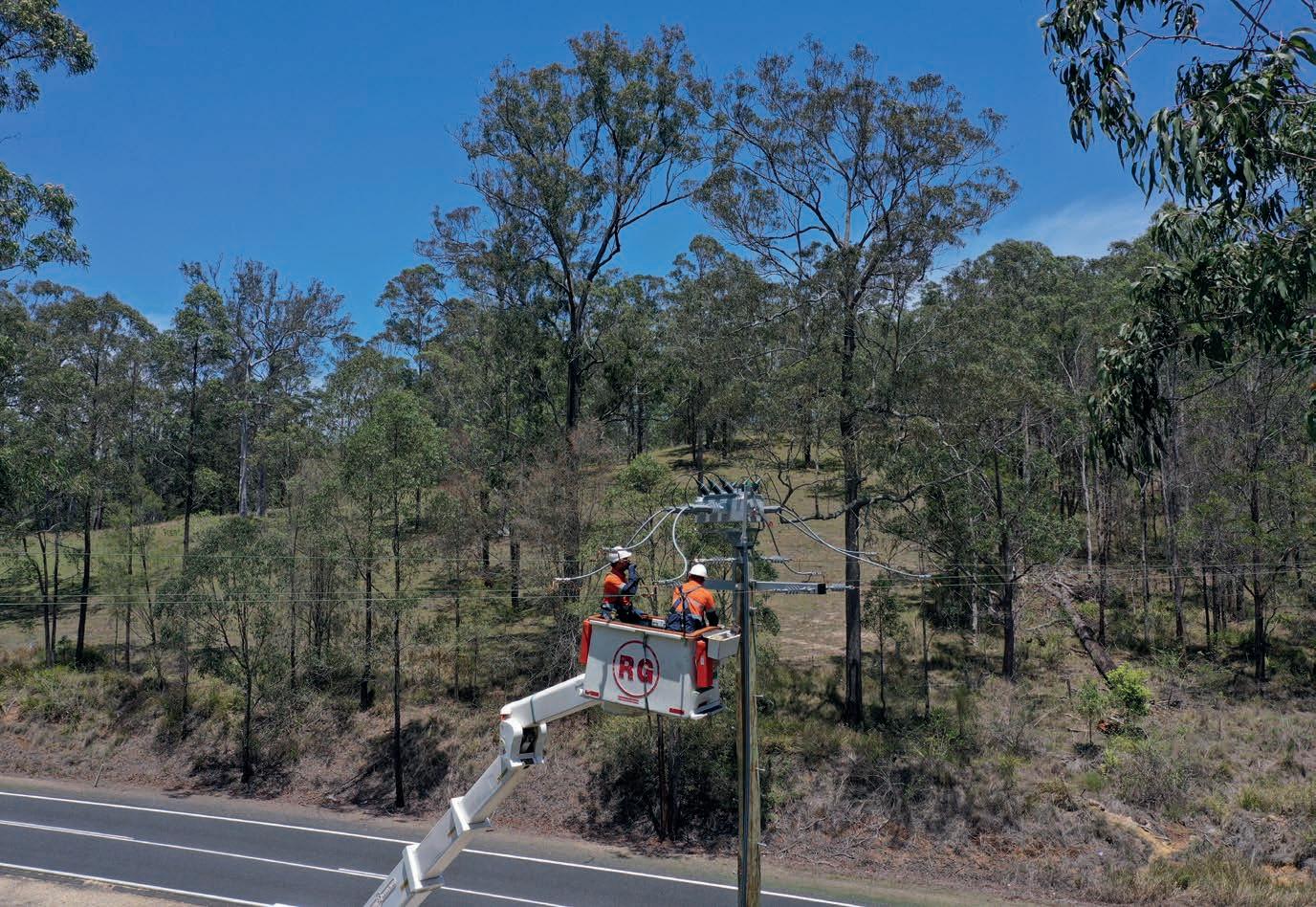
When it comes to electric power systems, switchgear is essential for safety as it allows for the regulation, protection and isolation of power systems. Gas insulated switchgear – most commonly with sulphur hexafluoride (SF6) – was previously a popular choice for power distribution systems because it effectively manages the flow of high voltage electricity.
However, following the EU’s proposal of the Green deal: phasing down fluorinated greenhouse gases and ozone depleting substances in 2022, SF6 was acknowledged as one of the most potent greenhouse gases and it was recommended that SF6 be phased out in all new switchgear by 2031.
Some utilities have already started replacing their fleets of SF6 insulated sectionalisers and load break switches with modern switchgear that uses solid dielectric insulation instead of gas.
A local product for local demand
With the detrimental effect of SF6 on the environment now so widely understood, many utilities are seeking to implement more sustainable practices, and demand for SF6 gas-free switchgear continues to rise.
Australian manufacturer NOJA Power is one of the world’s largest manufacturers of reclosers and has announced an increased
manufacturing capacity at its Brisbane headquarters, making it easier and faster for Australian companies to make the transition to sustainable alternatives.
NOJA Power’s Group Managing Director, Neil O’Sullivan, said, “We are pleased to see the NOJA Power VISI-SWITCH® now rolling off the production line as it is the perfect solution to eliminate the use of the SF6 gas switches in our customers networks and help them take further steps to achieve their net carbon zero targets.”
The company’s solid dielectric insulated load break switch, the NOJA Power VISISWITCH, has zero SF6 gas insulation and is the first of its kind with visible isolation.
NOJA Power has developed expertise in solid dielectric insulation through its OSM Recloser product, with more than 100,000 installations in 106 countries over the last 20 years.
The same technology has been applied to load break architecture to develop the VISI-SWITCH, enabling Australian utilities to implement a sustainable alternative to SF6 gas insulated switchgear.
The VISI-SWITCH consists of an enclosed air-break isolator and vacuum interrupter in series and is operated by a mechanical sequencing mechanism.

The vacuum interrupter in this design is responsible for all electrical makes and breaks, while the isolator provides all the necessary BIL to meet standards for a point of isolation.
NOJA Power’s VISI-SWITCH features an innovative viewing window inside the insulator bushing that allows operators to visibly confirm the point of isolation prior to linework, enhancing safety and providing peace of mind.
With its increased manufacturing capacity and innovative solid dielectric insulated load break switch, NOJA Power and its VISI-SWITCH is set to play a pivotal role in the shift away from SF6 gas insulated switchgear




By Maartje Feenstra, Dr Scott Dwyer and Professor Charlene Lobo, University of Technology Sydney

Australia has the potential to be a key player in the global hydrogen market, but a cost-effective hydrogen storage solution is needed to achieve this vision.
Australia is one of many countries that have signed a pledge to reduce carbon fossil fuel emissions to net zero by 2050. To reach this target, all sectors of the economy must develop their own sustainable pathway.
One particularly promising pathway is using green hydrogen (i.e. hydrogen and hydrogen-derived fuels produced from renewable electricity sources such as solar and wind). In some sectors, hydrogen competes with other technologies such as direct electrification, but for the maritime, aviation, chemicals, iron, and steel production sectors, green hydrogen or its’ derivatives are typically viewed as the only solution.

including advances in existing hydrogen derivatives like ammonia and methanol, as well as promising novel solutions such as boron hydrides.
Key sectors for green hydrogen Green hydrogen is a versatile chemical energy carrier that could fulfill various purposes across many economic sectors. However, because the production of green hydrogen requires renewable energy sources, it is key that green hydrogen is applied in those sectors where it is a critical commodity and not in those where other technological solutions
would be a better fit. The International Renewable Energy Agency (IRENA)1 has organised hydrogen applications from low priority to high priority (Figure 1). In the low priority areas, such as residential heating and urban vehicles, there are existing electrification alternatives with higher overall efficiency and lower cost. However, in the high priority areas, such as long-haul aviation and international shipping, there are no alternatives providing both high volumetric and mass energy density at reasonable cost, and green hydrogen is thus a critical commodity for sustainability strategies.
Australia has all of the attributes required to become a key player in the global hydrogen market. In particular, our abundance of cheap renewable solar and wind energy gives us the potential to produce cheap hydrogen. However, transporting this energy across the world and using it where needed requires a means of cost-effective hydrogen storage with high efficiency, high volumetric energy density, and high mass energy density. Therefore, hydrogen storage technologies are a key research topic, Transporting hydrogen requires cost-effective storage.
Hydrogen market opportunity
Global status
While hydrogen has had previous peaks in the last 20 years, it is now displaying an unprecedented momentum. On a global level, there are now ten major (>200MW) hydrogen plants under construction. The first of these projects to be completed was in Kuqa, China, owned by Sinopec. With 260MW of electrolysers, it should be capable of producing 20,000t of green hydrogen per year (although it has been reported to be having challenges and isn’t expected to be operating at full capacity until 2025). There are also several other large projects under construction in China and a 200MW green hydrogen facility powered by offshore wind in the Netherlands. The renewable hydrogen produced by these facilities will be used for oil refining and coal deep processing. There are also several GW-scale global hydrogen projects that are in various stages of planning and engineering up to 2040.
Green hydrogen in Australia
The Australian and Western Australian state governments have invested $140 million in Australia’s first large scale hydrogen project in Pilbara, Western Australia2. The Pilbara Hydrogen Hub is envisaged to be a major centre for clean hydrogen production and export while serving the needs of the local green steel and iron production industries. Australia also has more than 114 other hydrogen-related projects in various stages of development, including projects developing synthetic fuels, hydrogen hubs, hydrogen process heating, hydrogen mobility and many more applications. In December 2023, six hydrogen projects were shortlisted for a $2 billion hydrogen fund from the Australian Renewable Energy Agency (ARENA) with a combined proposed hydrogen capacity of more than 3.5GW3. Final funding recipients will be selected in late 2024, hereby opening the opportunity to propel Australia into the position of a global hydrogen market player. Another noteworthy 2024 development is the development
of a local Australian electrolyser manufacturing line (capable of producing 2GW of electrolysers annually), opened by Fortescue in Gladstone4
Green hydrogen is currently produced at higher cost than fossil-fuel based hydrogen. In the long term, larger plants and cheaper renewable electricity will lower the price of green hydrogen, but the current cost gap limits early technology implementation. Therefore, policy and regulatory mechanisms are necessary to accelerate research and technology deployment. Both the USA and Europe have recently introduced regulatory frameworks designed to accelerate the emergence of supply and demand markets for green hydrogen and other renewable energy technologies.
The US Inflation Reduction Act (IRA) awards up to $3 per kilogram of hydrogen with a greenhouse gas emission of lower than 0.45kg of CO2 per kg of hydrogen5. In response to these regulatory developments in the USA, Europe developed the Hydrogen Intermediary Company, which is designed to compensate producers for the difference between supply and demand prices6. Funding for the mechanism will be provided by public funding bodies, with a commitment of €4.5 billion from the German government alone.
Australia’s national hydrogen policy is based on the National Hydrogen Roadmap released in 20187, in which the focus is on investing in technology scaling up projects for pilots, trials, demonstrations and hydrogen supply chains. In light of the recent international policy developments, in 2023 the Australian government revised the National Hydrogen Roadmap, which led to the establishment of a $2 billion fund for large hydrogen projects8,9 Moreover, the 2024 Federal Budget included several billions for hydrogen production tax incentives and research and development10. With an existing innovation ecosystem composed
1 IRENA, Global Hydrogen trade to meet the 1.5°C climate goal part 1, trade outlook for 2050 and way forward 2022
2 Department of Climate Change, Energy, the Environment and Water (DCEEW), New Hydrogen Hub for Pilbara
3 ARENA, Six shortlisted for $2 billion Hydrogen Headstart funding
4 Fortescue, Fortescue officially opens Gladstone Electrolyser Facility
5 US Environmental Protection Agency, Summary of Inflation Reduction Act provisions related to renewable energy
6 HINT.CO GmbH, Hydrogen Intermediary company
7 COAQ Energy Council, Australia’s national hydrogen strategy
8 S&P Global, Australia to revise, renew its 2019 hydrogen strategy
9 ARENA, $2 billion for scaling up green hydrogen production in Australia
10 Australian Hydrogen Council, Federal budget sets bold vision for Australia’s hydrogen industry
of universities, research institutes, incubators, funding agencies, start-ups, technology companies and many more contributors, hydrogen projects can now be pushed to larger scale applications in Australia.
A significant part of this roadmap is research and development of new hydrogen storage technologies besides compressed/liquefied hydrogen. This includes storage in gaseous hydrogen compounds such as ammonia (NH3), methanol or boron hydrides such as diborane (B2H6) and Mg(BH4)2 with the boron hydrides still in the early stages of technology development.
The authors’ recommendations for Australian policy priorities that can help realise the full potential of energy storage technologies are:
• Further research to better understand the “sweet spot” for specific energy storage technologies, which can be through lab- and desk-based research projects involving industry funded projects, PhDs, and post-doctoral research
• Partnerships between industry, academia, and governments that can lead to supportive policies, secure funding, and identify use cases and new partnerships
• A strong internal market for hydrogen energy storage is possible given Australia’s abundant renewable energy resources and is an area in which supportive policy could play a major role in creating demand and local employment opportunities
• Connection to critical industries (maritime, aviation, chemical industry, steel and high temperature applications in industry) that rely on hydrogen for their trajectory towards net zero
• Leveraging existing and new funding programs, which can provide access to funding and industry partnerships
The opportunity for hydrogen storage is significant and the sectors in which these technologies can compete with other forms of energy storage is becoming clearer.


As Australia develops the infrastructure required for electrification, Combilift is ready to deliver powerful improvements to local warehouses.
The forklift manufacturer has been investing heavily in modern technologies to stay ahead of the game, with more than 90 per cent of its range now fully electric
Combilift Founder and CEO, Martin McVicar, said that it is vitally important for his company to make a positive impact on the environment and its customers’ health.
“In the last five years, roughly 90 per cent of our R&D investment has gone into electric power equipment. The majority of vehicles we’re now bringing to market are electric,” Mr McVicar said.
As Australia’s deadline for net zero approaches, it’s becoming more apparent that sustainability and electrification are two of the most important pillars of innovation for growing companies.
Knowing this, Combilift has continued to release products with the aim of creating more efficient and less impactful operations.
These included the autonomous Combi-AGT; the fleet management solution, Combi-Connect; and the Combi-LC blade straddle carrier for the handling of large wind turbine blades and towers.
These solutions allow Combilift to fulfil its three pillars of improving safety, maximising storage, and increasing efficiency.
The great battery debate
To power Combilift’s electrification, Mr McVicar has remained a strong voice in favour of lead-acid batteries, despite the automotive industry opting for lithium.
“In the car industry, the lithium battery has become the norm for electric vehicles, but no one has really figured out how to recycle them effectively,”
Mr McVicar said.
“In seven to ten years, recycling these lithium batteries could become a challenge if there’s no solutions found.
“On the other hand, lead-acid batteries last for much longer and they’re 80 per cent recyclable. So, while we wait for more environmentally friendly alternatives, we feel lead-acid batteries are best.”
In 2021, CSIRO found that Australia recycled 99 per cent of lead acid batteries, while only ten per cent of lithium-ion battery waste was recycled.
Further, the CSIRO predicts that lithium-ion battery waste is growing by 20 per cent per year and could exceed 100,000t by 2036.
“Lithium batteries are lighter, which is why the automotive business tends to use lithium – they want the vehicle to be as light and aerodynamic as possible,” Mr McVicar said.
“But in the forklift industry, no matter what the model is, our vehicles need counterweight to lift the load. So, leadacid batteries act as that load, instead of adding more steel.”
Combilift Country Manager for Australia, Chris Littlewood, said that both the company’s research and that of industry experts points to Australia’s desire for accelerated electrification.

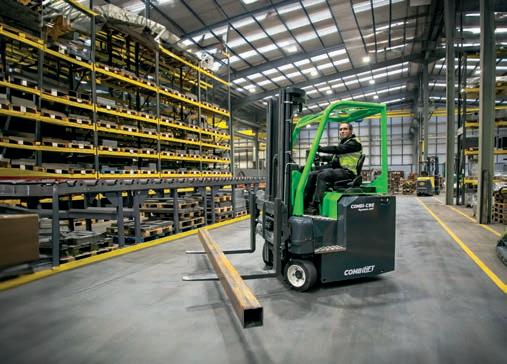
“The country has been building in readiness for this next wave of technological innovation. The infrastructure is being put in place and most businesses are trying hard to reduce their emissions,”
Mr Littlewood said.
A 2023 report from JLL revealed that 53 per cent of Australia’s top 100 industrial and logistics companies have net zero targets. Mr McVicar hopes that with Combilift’s help every one of these businesses can achieve their targets.
“[Electrification] has been our focus for the last five years, as well as how to measure the efficiency of those trucks,”
Mr McVicar said.
“As a company, we’re inherently focussed on sustainable solutions. And by that, I mean we’re focussed on making vehicles that are more environmentally friendly to use, as well as vehicles that enable our customers to make their warehouse utilisation more environmentally friendly.”





Special Features:
Award Winning Electric Traction
Auto Swivel Seat
Suspension Cab
Super-elastic Tyres
Extensive Battery Life
Exceptional Manouevrability

Special Features:
Dynamic 360 Steering
Seamless direction with Dynamic 360 Steering
Driver Position
Central driver position for increased visibility
Indoors & Outdoors
Suitable for smooth & rough terrain
Iconic Green
Vibrant green for increased visibility



A landmark trial is investigating how flexible management could play a pivotal role in navigating the challenges of household energy resources.

The Australian Renewable Energy Agency (ARENA) has announced it will contribute $6.2 million in funding to SA Power Networks’ $13.8 million Energy Masters project, unveiled in May 2024 in conjunction with the South Australian Government.
The Energy Masters project will trial smart, flexible energy management in 500 South Australian households, optimised by a home energy management system (HEMS), in an Australian first demonstration of aggregated flexible demand in residential settings.
As customers move to further electrify their homes and transport, demand on the electricity distribution system could double by 2050. Concurrently, the increased integration of renewable energy sources into the electricity grid presents a challenge for traditional methods of generating, dispersing and storing energy.
Consumer energy resources (CERs) are set to play a crucial role in the energy transition. CERs are consumer resources that generate or store electricity and include flexible loads that can alter demand in response to external signals, such as rooftop solar, batteries, and electric vehicles (EVs).
A report from the Energy Security Board, Consumer energy resources and the transformation of the NEM, said, “The next decade presents an opportunity for Australia to harness the potential of CER to support the decarbonisation of Australia’s energy systems. With more weather-dependent renewable generation in the market, CER will play a crucial role in helping balance fluctuations in energy demand and supply. CER can help deliver a more reliable and secure energy system at lower cost for all consumers and contribute to a lower emissions energy sector if they are an integrated part of the energy system.”
The Energy Masters’ trial of demand-side flexibility technology is designed to enable customers to better optimise their in-home energy use, while supporting the needs of the grid at certain times. ARENA has estimated that demand-side flexibility presents an opportunity to avoid between $20 and $30 billion in generation and network investment across Australia, which will in turn reduce the costs passed through to customers.
SA paves the way
South Australia is leading not just Australia, but the world, in its uptake of renewable sources. ElectraNet, the state’s transmission operator, reported in March 2024 that wind and solar accounted for 75 per cent of local demand supply in the past 12 months –the highest rate of incorporation in the world. As a result of this achievement, the South Australian Government has made ambitious targets of 100 per cent net renewable energy by 2027 and net zero emissions by 2050. However, to reach this target, South Australia will require significant investment in new renewable sources.
The Energy Masters trial is designed to reduce the amount of additional generation, network and storage capacity needed to meet this target, in turn reducing costs passed through to customers. Beginning with 500 households, the trial also aims to demonstrate the benefits of a collaborative approach between customers and industry to drive demand flexibility and smart electric homes.
The key components of the pilot are:
• Installation of a HEMS and efficient electric appliances with dedicated subsidy support
• Development and trial of new retail energy offers and demand flexibility technologies
• An 18-month research program exploring technical, policy and behavioural challenges and opportunities
• Utilising the information gained from the trial to inform the design of interoperability standards and aid the future scale-up and national adoption of two-way demand flexibility
Participating households will have access to appliance subsidies, simple retail offers from partner electricity retailers, and a smart home energy management system to optimise their home energy use. Subsidies will be available for smart split-system air-conditioners, heat pump hot water, and smart EV chargers.
Households will also be provided with a HEMS to enable optimisation of their home energy use. In return, households will participate in research that aims to demonstrate the value of energy-smart households and a simple, reliable and cost-effective way for all South Australians to become masters of their energy use.


Brighter Super is committed to supporting Queensland and the energy sector with a planned $500 million investment.
As the super fund for Queensland’s energy industry, Brighter Super is backing its members through its Queensland Investment Strategy to add a further $500 million in new assets in the state on top of the $1 billion already invested in Queensland.
Brighter Super CEO, Kate Farrar, said the 50 per cent increase in investment in Queensland embodies our commitment to our members and to Queensland’s brighter future.
“Our ambition is rooted in our nearly 60 years of heritage supporting Queenslanders in their journey to retirement,’’ Ms Farrar said.
More than 70 per cent of Brighter Super’s 230,000* members live in Queensland, which has a population growth above the national average and significant economic opportunities in the leadup to the 2032 Brisbane Olympic Games and beyond.

Brighter Super is assessing new investments in infrastructure, including energy and renewables, housing, property and agriculture.
Brighter Super’s existing $1 billion in assets in Queensland already underpins regional economies through investments in the Sunshine Coast Airport and the Central Queensland Livestock Exchange.
In Brisbane, through its investment in the Dexus Wholesale Property Fund, Brighter Super is backing the giant $2.5 billion Waterfront Brisbane project in the heart of Brisbane’s CBD.
New investments will be rigorously assessed and must be in the best financial interests of members, deliver strong returns, and through partnerships with investment managers and government, have a positive impact on the Queensland economy.
Ms Farrar said, “the Queensland Investment Strategy would drive job creation in the state, deliver sustainable economic growth and create lasting impacts in our communities. Most importantly the investment strategy will help shape the future of Queensland and deliver long-term value to our members.”
“Our focus is on building a welldiversified portfolio for our members to help navigate uncertain times and to generate the returns our members need for their retirement in the years ahead,” Ms Farrar said.
Following the merger of LGIAsuper, Energy Super, and the acquisition of Suncorp Super, Brighter Super is
the fourth-largest non-governmental financial institution in Queensland, managing more than $32 billion in retirement savings for its 230,000 members, as of 31 March 2024*.
“This means that we are big enough to make a difference for Queensland, whilst being small enough to provide the personal service and advice to help our members retire confidently.
“At a time when many in our industry are focusing on offshore investments, we are focused on making a difference for our members and Queensland,’’ Ms Farrar said.
* Based on assets under management non-government financial institutions in Queensland


Career opportunities created by the energy transition are set to provide significant benefits to First Nations organisations and communities across Australia.
The First Nations Clean Energy Network (FNCEN) has released a report – Powering First Nations Jobs in Clean Energy – which seeks to identify pathways for First Nations people to be supported to enter the clean energy sector, gaining access to quality career opportunities.
Quality long-term employment is an important means of empowerment for First Nations communities, and FNCEN has acknowledged that there have been many inquiries and reports on First Nations employment outcomes, by government and other parties.
FNCEN is eager to enable First Nations people to take advantage of the opportunities presented by Australia’s energy transition. As the drive to switch to renewables only accelerates, action needs to be taken now to ensure that the benefits of this once in a generation revolution are not allowed to slip by.
FNCEN’s report seeks to outline what these opportunities are and set ambitious action targets to establish a system for developing the skills and pathways to support First Nations people to enter into meaningful careers in the clean energy sector.
What is the FNCEN?
purpose of ensuring that First Nations Australians are supported to benefit from the opportunities of the energy transition.
The network is made up of First Nations individuals, groups, community organisations and land councils from across Australia. It has partnered with renewables companies, technical advisors, industry groups, legal experts, academics and unions.
FNCEN said that building long term skill growth and employment development paths in the clean energy sector is one of the key ways to ensure that the energy transition improves the lives of First Nations Australians, allowing them to turn jobs into careers, and careers into generational wealth.
FNCEN engaged with a number of institutions in the development of its latest report, including the Institute for Sustainable Futures (University of Technology Sydney), SGS Economics, Alinga Energy and Indigenous Energy Australia. Through this engagement, employment modelling and data analysis, FNCEN has examined the barriers that have resulted in the low numbers of First Nations workers in the clean energy sector and developed a 12-step action plan outlining how government, industry and First Nations
Supply and demand
FNCEN said that there are four types of actions taken to advance First Nations career opportunities in the sector:
• Demand-side measures, which increase opportunities for employment in the sector
• Supply-side measures, which increase the volume of First Nations Australians with the right skills to fill those roles
• Enabling measures, which connect First Nations people with training resources and employment opportunities
• Cross-cutting measures, which increase the capacity of First Nations organisations and seek to change the culture of the industry
One of FNCEN’s key learnings from its past programs is that supply and demand measures need to be integrated wherever possible.
The report highlights that during consultation with First Nations communities FNCEN found that there was a lot of cynicism about the commitment of industry to deliver on jobs, and that without guaranteed roles to progress to, skills programs became “training for training’s sake”.
One the other hand, demand-side

The action plan outlines how First Nations communities can reap the benefits of the transition.

targets without the people with the right skills to create real career opportunities.
The report found that, in practice, integration of supply-side and demand-side actions was critical for successful and meaningful creation of employment opportunities.
Primary 12 recommended actions
The FNCEN report puts forth 12 recommendations to industry:
1. Incorporate First Nations employment and training targets into the Capacity Investment Scheme
The report states that including well-designed employment and training targets in the Capacity Investment Scheme (CIS) would increase opportunities for First Nations Australians.
To ensure the targets have the intended effect, they would need to be well-coordinated and achievable.
Targets that are too ambitious and are not supported by programs to increase the supply of trained candidates run the risk of employers hiring to ‘tick boxes’, focusing on short-term, low-skill jobs that won’t create lasting changes in First Nations employment rates.
Targets would need to be adapted across industry to reflect variations across states, REZs, regions and sectors.
2. Create a coordinated industry program for First Nations apprentices in wind farm maintenance
The report states that FNCEN undertook fieldwork which found that a coordinated scheme with wind farm operators and maintenance firms could engage First Nations apprentices and trainees as mechanical technicians, but warned that the feasibility of such a program would need to be proven in order to drive voluntary industry action.
FNCEN said that it interviewed several wind farm operators, some of which expressed that they had tried to undertake First Nations employment schemes without finding success, whilst others said that they were unsure how to go about it.
Through its consultation FNCEN found that there was a common belief among wind firms that a coordinated, industrywide approach would be required to make any meaningful change.
It also found that First Nations stakeholders had low confidence that renewables companies would deliver on employment and training.
The report outlines that a coordinated scheme, with well-adjusted targets, in select regions and sectors, could demonstrate to the industry and First Nations communities that, together, meaningful jobs and skills opportunities are possible.
3. Integrate First Nations employment and training targets and initiatives into housing retrofit, diesel replacement and microgrid programs
The report found that programs focused on First Nations roles in housing retrofit work could leverage competitive tenders to secure commitments to apprenticeships for trades vital to the energy transition.
While housing retrofits were found to be the largest opportunity in this area, there is potential for other programs to be delivered in diesel replacements and microgrids.
These roles could serve as a bridge to more large-scale renewable energy projects in REZs as, for example, electrical apprentices undertake the domestic component of their apprenticeship before working on large-scale projects.
4. ‘CareerTrackers for Clean Energy’, develop long-term industry commitments to First Nations cadetships
Through its consultation with industry, FNCEN found that there is high demand and supply shortages in a range of occupations across the sector. It was suggested to FNCEN that a ‘CareerTrackers for Clean Energy’ initiative could create pathways for First Nations students to find employment in the energy industry.
The report states that funding should
be provided to develop an initiative between universities, the energy sector and associated organisations to increase the number of First Nations students completing degrees in clean energy qualifications.
5. Clean energy careers for First Nations school students
In its community consultation FNCEN found that there was a low awareness of the clean energy sector and the types of jobs available in it amongst First Nations student cohorts, who represent a great opportunity for change due to the young profile of First Nations communities.
The report suggests some activities that could be undertaken to boost awareness amongst students, including:
• Outreach campaigns to raise awareness of the clean energy sector
• Information and engagement programs to enable First Nations students to better understand the employment opportunities and pathways into these jobs
• Programs to create opportunities such as school-based apprenticeships and internships
• Embedding clean energy education in the curriculum
• Equip First Nations students with practical job-seeking skills such as interview practice and resume writing
6. School to VET transitions: Traineeships and Apprenticeships
The report states that the transition from school to employment and training is a major pain point for First Nations students.
A range of initiatives exist in other sectors that work to bridge this gap, and the report calls for funding to be allocated to the development of pre-apprenticeship programs specifically for key clean energy sector occupations. It also states that increasing the number of First Nations trainers would boost course completions, as they are better able to engage with First Nations students.
7. Outreach engagement with First Nations students via Regional University Study Hubs Regional, rural and remote communities all suffer from gaps in access to education, but this is especially true for First Nations communities. Regional University Study Hubs (RUSHs) are crucial means of overcoming the
physical barrier to tertiary education, and the recent investment by the Federal Government into RUSHs is expected to increase the number of hubs close to or in REZ regions.
The report advocates for the development of an outreach and engagement program through the RUSHs that could host events in partnership with the clean energy sector, develop information sources, and use First Nations voices to reach, inform and inspire students.
8. Pre-employment programs to create pathways into entry-level jobs in solar farms
In the renewable energy industry, solar farms offer a comparatively high number of entry-level positions such as labouring, cleaning or traffic management which only require shortterm training.
This can be beneficial for First Nations Australian’s who are out of the workforce or who have never worked.
The report calls for the state governments to invest in developing pre-employment programs to create a pipeline of First Nations applicants in REZs with concentrations of solar farms, and to create ‘wrap around’ services that can help address circumstances that might prevent workers from keeping their jobs, such as housing issues, family responsibilities or transport limitations.
9. Funding Group Training, focussing on the REZs and First Nations housing retrofits
Group Training Organisations (GTOs) are a valuable means of increasing the number of apprentices and trainees in the renewable energy sector.
The FNCEN report highlights that despite GTOs seemingly being conducive to the circumstances of the energy transition, they do not currently play a significant role.
The report also finds that pooling industry demand in the REZs through a tender process could support companies in meeting apprenticeship and First Nations targets, by creating funding certainty and reducing transaction costs for industry.
10. Fund an Industry support program to enable achievement of employment and training targets Even with measures to increase the supply of qualified First Nations
apprentices and workers, and targets to lift industry demand, the report highlights the likelihood that the clean energy sector will require support and facilitation to implement meaningful change.
With the transition only speeding up, renewable energy developers are under major time pressures to deliver projects and are suffering from skills shortages as a result.
The report calls for funding from the Federal Government for the development of an industry support program, which could set skill, training and diversity targets supported by a network of specialist officers.
11. Building the capacity and coordination of First Nations organisations, networks and businesses
Through its consultation, FNCEN has found that there is a lack of resources and capacity amongst First Nations organisations and networks, which is resulting in difficulty enabling employment, building a pipeline of workers, and winning tenders.
The report states that funding from State and Federal Governments is required to increase the capacity of First Nations organisations to engage effectively with the clean energy sector.
Additionally, government support could be used to develop knowledge sharing networks between First Nations communities that can share best practices and employment models.
12. Building cultural competence in the renewable energy sector
Finally, the FNCEN report highlights that a major cultural shift is required to create culturally safe workplaces and organisations that provide career paths for First Nations Australians.
Whilst recruitment and training ensure that there is a supply of eligible applicants, culturally safe workplaces are necessary to improve the retention and performance of First Nations employees.
Many of the training and employment challenges that regional and remote Indigenous communities face are due to systemic, intergenerational disadvantage.
FNCEN advocates for the clean energy industry to work together with government to develop innovative solutions to overcome the barriers to achieve meaningful First Nations employment targets.

Maintenance spending on oil and gas infrastructure will slow.
As the energy transition continues to alter Australia’s electricity network, experts are also expecting changes to maintenance expenditure across the sector.
Industry analyst and economic forecaster, Oxford Economics Australia, has released the findings of its Maintenance in Australia report that outlines how the renewable energy transition is slowing spending growth in electricity maintenance.
The report also warned that maintenance spending on oil and gas infrastructure will continue to slow, and that maintenance spending on electricity
generators will soon begin to fall.
Study author and Head of Global Construction Forecasting for Oxford Economics Australia, Dr Nicholas Fearnley, said that the utilities sector will see the slowest growth in maintenance spending as higher cost fossil fuel generators are replaced by renewable generators with lower maintenance requirements.
The report analysed maintenance activity across a range of industries,
including the mining, road, non-residential building, utilities and manufacturing sectors, and forecasts expected activity for the next 15 years.
Oxford Economics describes maintenance as work that is undertaken to improve the performance of an asset, but not above the level of its original design.
“This is different to construction, which can be thought of as work which either creates a new asset or improves on the design standard of an existing asset,” Dr Fearnley said.
While maintenance and construction are distinct sectors, they experience a significant amount of overlap when it comes to materials and skillsets. This means that the industries tend to compete for materials and workers during shortages, putting further strain on projects. On the other hand, the maintenance industry serves as another revenue source for companies that supply construction materials and skills, particularly during periodic construction downturns.
In total, Oxford Economics has estimated the sector will contribute $57.4 billion to the Australian economy in FY24.
Transition impacting maintenance spending
The report warns that the renewable energy transition is slowing growth in the electrical maintenance sector, and that there may even be years when maintenance spending on energy generators falls.
“Renewable generators require much less maintenance than fossil fuel generators per megawatt hour, and so maintenance spending will naturally fall as coal power plants are replaced by wind and solar solutions,” Dr Fearnley said.
“This isn’t necessarily bad news for maintenance providers, as those who are positioned to provide maintenance to renewable generators will continue to face a growing market.”
Oxford Economics’ report anticipates that electricity generation maintenance expenditure will fall from $978 million in 2023–24 to $964 million in 20240–25 and continue falling to $644 million by 2033–34.
Oxford Economics expects, however, that this lower maintenance spending will be offset by growth in the transmission sector, as networks and infrastructure are expanded to enable new renewable energy zones (REZs).
Some energy regulators have increased the allowed capital expenditure for electricity and transmission companies.
“We think these decisions will be repeated by other state regulators in upcoming pricing reviews and so signals higher maintenance spending for network owners,” Dr Fearnley said.
Growth to slow
“The mining investment boom at the start of the last decade was followed by a mining production boom, and then a mining maintenance boom,” Dr Fearnley said.
“We think this boom is now approaching its peak and we are seeing signs that asset owners are looking to manage their maintenance costs. As a result, we expect slower growth in mining maintenance expenditure over the coming years.”
Oxford Economics said that the LNG sector has shown significant maintenance spending growth over the years, but that it expects this growth to stagnate as operators seek to manage their maintenance costs. For example, more owners and operators are looking to remote technologies like drones to reduce the costs of inspections.
Gas maintenance spending can be highly variable between projects, based on their location and their process. For example, Oxford Economics estimates that offshore gas operations attract as much as twice the maintenance expenditure as their onshore counterparts, due to the harsh environment resulting in increased corrosion.
“While most oil and gas maintenance is outsourced, there are significant barriers to entry for new companies attempting to win ‘mega-contracts’,” Dr Fearnley said.
Coal operations occupy a significant portion of the mining sector’s maintenance costs, with Oxford Economics estimating the total expenditure in both 2024-25 and 2025–26 to be $3.6 billion.
Oxford Economics has said that its long-term view of the coal sector remains bleak, but that in the near-term, relatively high commodity prices are supporting coal production and maintaining a stable amount of maintenance expenditure in the industry.
“Most Australian coal is mined in New South Wales and Queensland, and exported to Asia,” Dr Fearnley said.
“New South Wales producers are generally located within reasonable proximity to each other in the Hunter Valley and are known to collaborate by coordinating weekly shutdowns to ensure a steady workflow for contractors.
“Queensland producers, on the other hand, are dispersed further apart and located in more remote areas, reducing the potential cost savings experienced by New South Wales operations.”
Unlike many of sectors across the mining
industry, copper operations are expected to see growth in maintenance spending, as the critical mineral remains vital for use in consumer electronics, electric vehicles and the extensive electricity infrastructure associated with the energy transition.
Copper maintenance activity makes up more than 25 per cent of expenditure in the metal ore mining sector. Oxford Economics estimates that copper maintenance spending will increase from $865 million in 2024–25 to $890 million in 2025–26.
The Australian Competition and Consumer Commission (ACCC) has authorised the Australian Energy Market Operator (AEMO) and other electricity industry participants in the National Electricity Market (NEM) to work together in the scheduling of maintenance, repairs, upgrades, new connections and other projects along with the authorisation to share associated information necessary to coordinate such works.
The ACCC said that it has made this decision having acknowledged the challenges in managing the NEM through the energy transition. The ACCC also said that it is in the process of implementing and considering reforms that will assist the AEMO in managing the scheduling of the expected outages to occur as renewable projects are incorporated into the network.
ACCC Deputy Chair, Mick Keogh, said that the proposed coordination will increase AEMO’s ability to manage the scheduling of outages, providing greater security for the supply of electricity over the next two summer periods, which are forecast to be challenging.
The ACCC has acknowledged concerns that there is a risk of reducing competition and creating information disparities when enabling coordination and information sharing of this level. In response, it has developed a series of conditions that are designed to ensure competition remains steady in the supply of electricity and the acquisition of maintenance services.
“With transparency and reporting conditions, we are satisfied that the proposed coordination is likely to result in public benefits that would outweigh the likely harm to competition,”
Mr Keogh said.
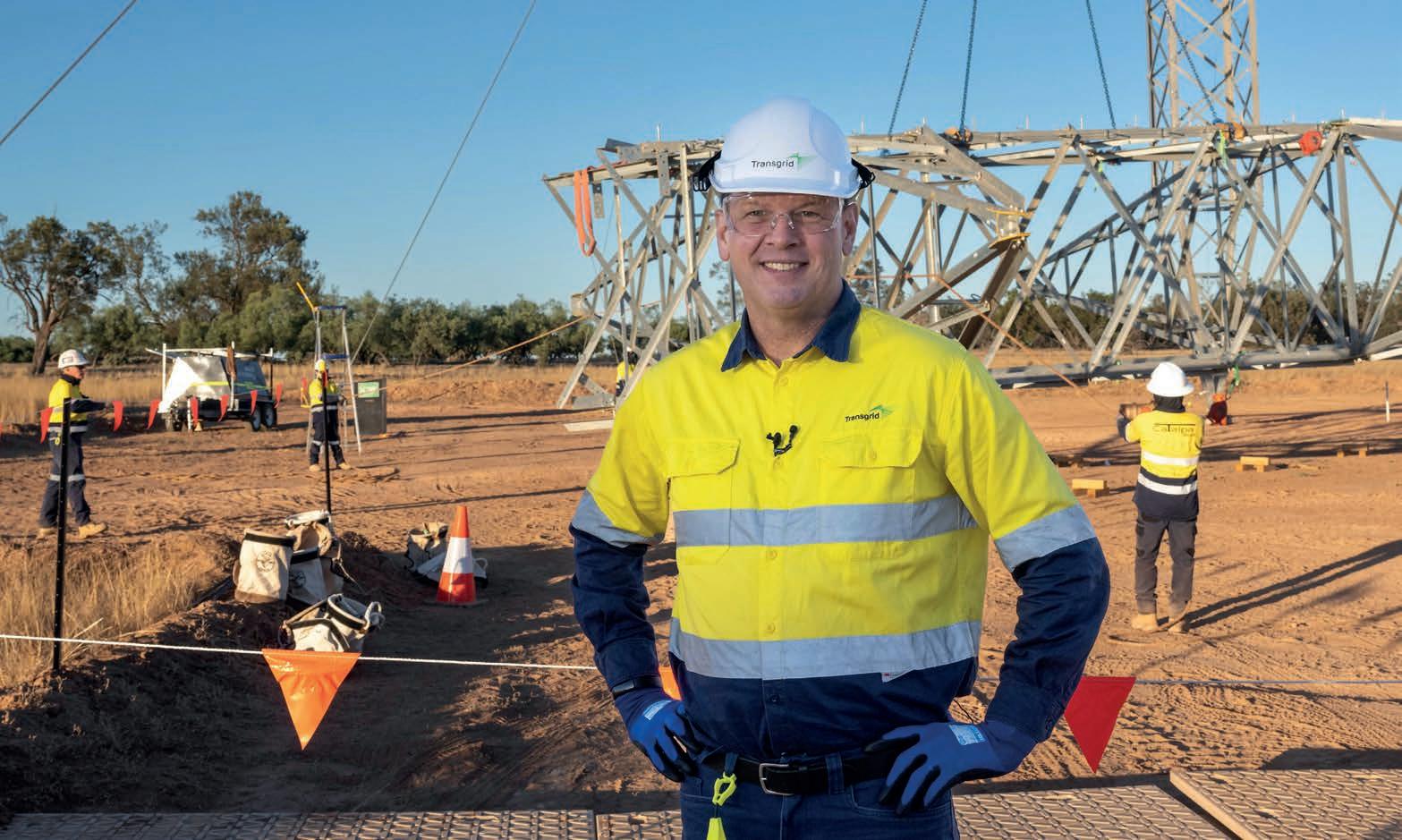
Australia’s largest transmission project is not only enabling Australia’s clean energy transition but is also helping the grid itself go green.
Project EnergyConnect is linking the grids of New South Wales, South Australia and Victoria and once complete, it will enable energy sharing between the three states for the first time.
Transgrid is delivering the 700km New South Wales section from Wagga Wagga to the South Australian border along with a connection to Red Cliffs in Victoria.
Transgrid CEO, Brett Redman, said that sustainability has been embedded at heart of the planning and delivery of the project.
“Transgrid is delivering the nation’s transition to a clean energy future in a sustainable way by designing and constructing critical infrastructure to optimise environmental, social and economic outcomes,” Mr Redman said.
“We’re delivering real sustainability outcomes with innovative solutions to reducing our carbon footprint, minimising the use of energy and water, protecting valuable biodiversity and building in resilience against forecast climate impacts.”
The Infrastructure Sustainability Council has awarded EnergyConnect the highest Design Rating of ‘Leading’, and the this marks the first time a transmission project in Australia has received an official sustainability rating.
“Transgrid is on the frontline of sustainable development and this rating is a critical step towards cementing our reputation as a recognised leader in sustainability,” Mr Redman said.
Acting CEO, Patrick Hastings, said “EnergyConnect is well-positioned to deliver an asset that will provide a positive ecological benefit while also minimising its contribution to GHG emissions. This is a monumental step for transmission projects and an encouraging sign of progression in the sector.”
The ISC Rating recognises a series of industry-leading initiatives in the design and delivery of the critical interconnector.
This includes a 35 per cent reduction in clearing on the project’s western alignment between Buronga and the South Australian border.
Expert arborists from ENSPEC travelled the entire length of the New South Wales easement.
Principal Arborist and Ecologist, Craig Hallam, said they assessed trees for archaeological, ecological, and cultural significance.
“Our team walked the whole easement, we started at the South Australian border and walked right through to Wagga Wagga and assessed hundreds of thousands of trees along the way,” Mr Hallam said.
“The trees in this environment are critical for the ecology and biodiversity of the area and cultural heritage. The age of some of the trees was more than 300 years and up to 1000 years
Many trees including Aboriginal scar trees have been retained within the transmission line easement while still complying with vegetation clearance requirements. Annual inspections will ensure bushfire safety.
EnergyConnect’s transmission line structures have also been located to avoid valuable biodiversity and culturally sensitive sites.
To offset essential clearing, Transgrid is rolling out the largest nest-box program in Australia to provide habitat for local species.
More than 1500 boxes have been installed on the western alignment with thousands more to follow in the east.
As a Critical State Significant Infrastructure project EnergyConnect is also subject to the New South Wales Biodiversity Offsets Scheme (BOS).
Under the scheme, Transgrid is required to document, via Environmental Impact Statements, how project impacts on biodiversity will be avoided and minimised.
Transgrid is currently establishing Biodiversity Stewardship Agreements (BSAs) on private land.
A BSA sets up a form of private land conservation, where a landholder manages some or all their land for biodiversity, nature, or wildlife
The agreements are providing unprecedented opportunities to perpetually preserve biodiversity on large swathes of land as Transgrid steps up efforts to protect native flora and fauna.
Transgrid is establishing one of the largest BSAs in the state’s history on an 8,700ha property in south western New South Wales, to protect valuable habitat for endangered birds and flora.
“Transgrid is actively investing in increasing biodiversity and working with landholders and traditional owners, so our natural heritage is protected and enhanced for future generations,”
Mr Redman said.
“These agreements give us the opportunity to be at the forefront of preserving valuable biodiversity.”
Conserving and recycling valuable resources such as water is also a priority on EnergyConnect.
Up to 90 per cent of water used on the project is recycled including water used for construction and dust suppression as well as treating grey water from accommodation camps.
More than 400t of wooden pallets have been recycled along with 50,000 cans and bottles from worker accommodation camps, reducing waste going to landfill.
Materials and equipment were also reviewed to reduce the project’s


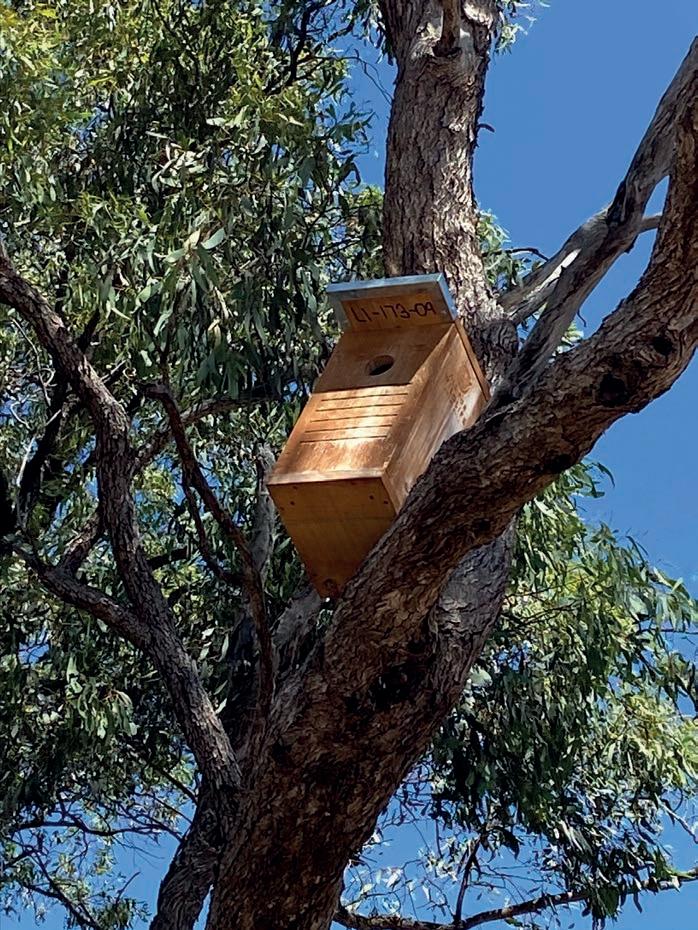
Guyed towers, which require 21 per cent less steel and 15 per cent less concrete compared to conventional self-supporting structures, are being used on the project.
Comprehensive physical risk assessments have also been carried out to safeguard the new infrastructure from the changing climate.
Mr Redman said lessons learned on EnergyConnect will provide a blueprint for other projects.
“We are going above and beyond to set the benchmark in sustainability best practice for the future pipeline of energy transmission projects across the country,” he said.
During construction, EnergyConnect has invested tens of millions of dollars with local suppliers in communities along the project alignment.
Transgrid Executive General Manager of Major Projects, Gordon Taylor, said, “We’re maximising the positive social and economic benefits for communities by supporting local businesses to create jobs and economic growth.
“EnergyConnect has so far invested more than $125 million with more than 180 local and First Nations businesses across the Riverina, Murray and Sunraysia regions.”
The Garraway Group, based in Mildura, carried out major earthworks for the Buronga substation – one of the biggest in the Southern Hemisphere.
Garraway Group Managing Director, Russell Garraway, said “We have enjoyed working on the project and are proud of the work that’s been achieved.
“By working on EnergyConnect, we’ve been able to grow our team and in particular our First Nations workforce which is something we’re immensely proud of.”
As construction moves east the business benefits will shift towards the Riverina.
Kennedy Bros Earthmoving in Wagga Wagga has built access points and access tracks for safe vehicle entry and exit from roads to facilitate construction of the transmission line.
The business’s owner Andrew Kennedy said it has allowed the familyowned company to expand.
“It’s a very positive thing to be involved in this project. It gives us certainty for the future and enables us to employ new operators and bring

new people into the business.
“We’ve directly employed another eight people and we have also employed another three or four contractors to help complete the works.
“We see it as vital for the existence of local communities for the large companies that come into town to employ locals, keeping the money in the town and enhancing the community,” Mr Kennedy said.
Total Tools in Wagga Wagga is another key local supplier, and Store Manager Nathan Bromham said “It makes a massive difference to what we do. It gives us the confidence to continue to invest heavily in stock and into our staff, so it’s been great for our business.
“It helps keep that money with local businesses and the community so everyone wins at the end of the day.”
Upskilling the workforce
EnergyConnect is creating up to 1500 jobs, mostly in regional New South Wales, and contributing $4 billion in net economic benefits. The project is also
investing in training opportunities for people in regional areas.
Legacy 100 is an Australian-first training program to grow the country’s own transmission line construction workforce.
The program allows participants to earn while they learn and gain a Certificate II in Transmission Line Construction.
The first participants have graduated from the program after completing training on EnergyConnect and gaining experience in building high-voltage electricity towers and lines.
“We are investing in the nation’s energy workforce to address regional skills and jobs shortages and reduce reliance on overseas trained workers. Legacy 100 participants will form the backbone of the future workforce in the transmission tower construction industry,” Mr Taylor said.
Transgrid is also partnering with Charles Sturt University to help train the nation’s next generation of engineers.
A $2 million Transgrid Engineering Scholarship Fund is supporting 100 engineering students at the university’s Bathurst campus.
“The energy superhighway made up of EnergyConnect, VNI West and HumeLink is being built in regional New South Wales and will require world-class engineering expertise,” Mr Redman said.
“These scholarships will support the next generation of engineers through their training and help to address a critical skills shortage in regional Australia.”
Construction of the first line on the New South Wales side of the project has been completed between Buronga and the South Australian border, with works on the other three lines progressing.
Work on the first line included the erection of 291 towers using 6,000t of steel and the stringing of 1900km of conductor cabling.
Mr Taylor said it is significant milestone for EnergyConnect.
“We are getting on with the job of delivering this nation-critical transmission infrastructure that will deliver cleaner, cheaper renewable energy to millions of customers and help achieve Australia’s emissions reduction targets.”
By Associate Professor Katja Ignatieva, University of New South Wales Business School

With a strong focus on accelerating the transition to renewables, the 2024–25 Budget opens the door to a shift in how Australia generates, consumes and thinks about energy.
The Federal Government’s 2024–25 Budget cemented Australia’s transition to renewable energy as a top priority, with the Future Made in Australia package set to deliver more than $22 billion to help the nation reach net zero. But, how exactly will this funding be allocated, and what are the key renewable resources and strategies that we’re likely to see in the coming year?
With climate change no longer a distant threat and the global rise in prices for fossil fuels such as coal, natural gas, and oil directly impacting electricity generation costs, Australia is navigating a significant transitional phase in its energy policy. Several factors contribute to the high electricity prices currently faced by consumers.
Rising global fossil fuel prices have led to increased costs for electricity generation. Despite Australia extracting enough coal and gas to meet its own needs, a significant portion of these resources are exported to meet global demand, which drives up domestic prices.
Supply chain disruptions due to geopolitical tensions, natural disasters and logistical challenges further exacerbate the situation. Outages at coal plants or delays in fuel deliveries can reduce the supply of electricity, causing prices to spike. Additionally, extreme weather events such as heatwaves, sudden cold waves and storms create significant imbalances between supply and demand, straining the electricity grid and leading to higher prices.
The transition to renewable energy presents its own set of challenges. Renewable energy sources like solar and wind are intermittent and require substantial infrastructure investment. During the transition period, there might be times when renewable energy is insufficient to meet demand, necessitating reliance on more expensive fossil fuels.
Setting up the necessary infrastructure for renewables, such as hydropower developments and battery storage, is both time-consuming and financially costly, contributing to higher electricity prices in the short term.
Geopolitical factors, including international conflicts, trade disputes and economic sanctions add another layer of complexity, contributing to uncertainty and volatility in energy markets. Environmental policies aimed at reducing carbon emissions, such as carbon pricing,
while crucial for combating climate change, also influence electricity prices by increasing the cost of electricity generated from fossil fuels.
Within the National Electricity Market (NEM), electricity can be transmitted between different regions via interconnectors. These may be of particular importance when the price of electricity in adjoining regions is low enough to displace local supply, but also when the energy demand in a particular region is higher than the amount of electricity that can be provided by local generators.
Retailers are responsible for managing the risk associated with volatile wholesale prices, often passing these costs onto consumers through fixed-price contracts. The wholesale market is characterised by high volatility, with prices spiking frequently due to various factors such as demand fluctuations, supply disruptions, extreme weather conditions and geopolitical events.
Retailers can attempt to mitigate these risks through several strategies. One approach is securing long-term energy contracts that provide more stable pricing. However, predicting long-term market conditions accurately is complex and characterised by uncertainties. Another strategy involves investing in energy storage solutions, such as batteries, which can store excess energy during low-price periods and release it during high-price periods.
Despite these efforts, the inherent volatility of the energy market makes it challenging to mitigate all risks. Retailers often build the potential for extreme price spikes into their pricing models, passing these costs onto end-customers (businesses and households). This means that even with various hedging strategies, consumers ultimately face the impact of price volatility.
Mitigating these risks is paramount when planning the transition to renewables. The Budget needs to provide support and assistance for consumers, retailers and energy manufacturers to ensure that a renewable grid works for all.
As fossil fuel prices continue to rise and the urgency of addressing climate change increases, the transition to renewable energy has become a priority for the Federal Government as well as
businesses. Renewable energy sources, such as solar, wind and hydropower, offer a more sustainable and potentially cost-effective alternative to fossil fuels.
These sources are abundant and sustainable, providing a long-term solution to energy needs. Businesses can benefit from diversifying their energy sources, ensuring a more resilient supply and potentially lowering costs over time. Moreover, improving energy efficiency is crucial for a sustainable energy future. Implementing energy-saving technologies and practices, such as energy-efficient lighting, heating, cooling systems, and smart grid technologies, can significantly reduce overall energy consumption and costs.
In addition to adopting renewable energy sources, businesses must develop strategies to hedge against energy price volatility to enhance resilience. Long-term energy contracts and energy storage solutions, like batteries, are effective methods. By securing stable pricing and having the capability to store energy, businesses can better manage the risks associated with the volatile energy market.
Transitioning to renewable energy and improving energy efficiency involve both practical and ethical considerations. Companies must balance the need for reliable energy with the responsibility to minimise their environmental impact and support social responsibility initiatives.
impact of a rapid
A rapid transition to renewable energy without intermediate solutions poses several risks. Shutting down fossil fuel power plants too quickly can lead to energy shortages, as the infrastructure for renewable energy may not be fully developed to meet demand. This can lead to higher energy prices and instability in the energy supply until a significant share of renewable infrastructure is established.
The transition stage from fossil fuel generation to renewables suggests setting up significant infrastructure, including hydropower developments and battery storage. This is a timeconsuming process, and energy prices may continue to rise until sufficient renewable energy capacity is achieved. Thus, it is imperative to have a balanced approach that includes intermediate solutions, such as investing in dispatchable generation, to ensure a stable transition.
The Budget allocates more than $65 billion to enhance renewable energy capacity.

The Federal Government and businesses throughout Australia must collaborate to develop short-term strategies that support the sustainability of the energy sector, while building the necessary infrastructure for a renewable future. For instance, the Federal Government’s Rewiring the Nation policy aims to increase the share of renewables in the NEM to 82 per cent by 2030. This policy includes modernising the grid and investing in new infrastructure, which can enhance stability in the energy sector and eventually reduce electricity prices.
The 2024–25 Federal Budget signifies a pivotal turning point in Australia’s energy policy. The Federal Government is making substantial investments to drive the country towards becoming a “renewable energy superpower”, which has significant implications on the energy sector, particularly within the scope of sustainability and renewable energy. With a strong focus on renewable energy and sustainability, the budget sets the stage for a transformative shift in how Australia generates, consumes and thinks about energy.
As global dynamics push towards greener energy solutions, Australia’s latest budget aims to position the country at the forefront of this global shift, targeting both environmental improvements and economic opportunities. One of the standout features of the budget is the allocation of more than $65 billion to enhance renewable energy capacity. Of that, $27.7 million has been dedicated to integrating batteries and solar into the grid. This is done to help Australia achieve energy independence, as well as to stabilise the grid as more intermittent renewable sources are incorporated into energy production.
The Future Made in Australia package outlined in the Budget includes substantial efforts to advance the energy sector’s sustainability and efficiency. With a focus on promoting renewable energy projects and enhancing grid integration, the Budget allocated significant resources toward these ends. A total of $134.2 million was granted to prioritise and expedite approvals for renewable energy projects, while $27.7 million was allocated to integrate consumer energy resources, like batteries and solar, into the grid. This funding initiative is set to stimulate private sector investment,
crucial for scaling renewable projects across the continent.
The Australian Renewable Energy Agency (ARENA) has also received a significant boost with a $1.9 billion funding package to support its activities. This funding is expected to further ARENA’s mission in advancing renewable energy technologies and projects, thereby facilitating Australia’s transition to net zero emissions.
The 2024–25 Budget plays a critical role in Australia’s energy transition by allocating substantial investments and policy measures to accelerate the shift to renewable energy, enhance sustainability, and ensure a more resilient energy future. It has several key implications for the energy industry:
• Investment in renewable energy infrastructure: the budget allocates significant funding for the development of renewable energy infrastructure, including investments in solar farms, wind turbines, and hydropower projects. This aims to reduce dependence on fossil fuels and lower greenhouse gas emissions, creating a sustainable energy system.
• Energy efficiency: the budget supports the adoption of energy-saving technologies across industries. Incentives are provided for upgrading to energy-efficient lighting, heating, and cooling systems, as well as implementing smart grid technologies. These measures are crucial for lowering overall energy consumption and costs.
• Development of advanced energy storage solutions: the budget provides substantial support for companies developing renewable energy technologies, including hydropower plants, renewable energy components, and advanced battery technologies. Grants and subsidies foster innovation and ensure the availability of cutting-edge solutions needed for a sustainable energy future. To address the intermittent nature of renewable energy, the budget invests in advanced energy storage solutions, such as hydrogen and lithium-ion batteries, ensuring a stable and reliable supply. These investments mitigate risks associated with energy price volatility and enhance grid resilience.
• Modernisation and expansion of the electricity grid: The budget focuses on modernising and expanding the electricity grid to facilitate the integration of renewable energy sources. This comprehensive approach includes upgrading transmission lines, constructing new interconnectors, and deploying advanced grid management technologies. These measures are designed to improve overall efficiency, ensure reliability, and accommodate the increasing share of renewable energy in the grid. By enhancing the grid infrastructure, the budget aims to support the stable and efficient distribution of electricity, mitigate risks associated with energy intermittency, and create a more resilient energy system capable of meeting future demands.
• Incentives for renewable energy adoption: the budget introduces various incentives to encourage the adoption of renewable energy by businesses and households. These include tax credits, subsidies, and grants for installing solar panels, wind turbines, and other renewable energy systems, making clean energy more affordable and accessible.
• Support for research and innovation: recognising the importance of technological advancements, the budget allocates funding for research and development in renewable energy technologies, fostering innovation in energy storage, grid management, and energy efficiency.
• Ethical considerations: the energy transition encompasses not only technological and economic dimensions but also significant ethical considerations. Transitioning to renewable energy and enhancing energy efficiency allows businesses to reduce their carbon footprint, thus contributing to the global effort to combat climate change. Environmental policies aimed at reducing carbon emissions are reinforced through stringent regulations and carbon pricing mechanisms. These measures incentivise the reduction of greenhouse gas emissions and promote the use of cleaner energy sources. By placing a cost on carbon emissions, the Federal Government encourages businesses to adopt more sustainable practices and invest in renewable energy.
• Social equity: finally, the budget promotes social equity in the energy transition by allocating funds for initiatives that ensure reliable and affordable energy access for disadvantaged communities. This includes programs providing financial assistance for low-income households to adopt renewable energy solutions and improve energy efficiency. By promoting social equity, the government aims to ensure
that the benefits of the energy transition are shared widely across society. Additionally, businesses supporting these initiatives can help bridge the energy gap, contributing to a more inclusive energy future. Through these combined efforts, both the government and companies can play a pivotal role in fostering a sustainable and equitable energy landscape.
The Federal Government also ensures that all these initiatives are scalable to accommodate population growth and future energy demands.
By implementing robust infrastructure and technology development plans, Australia aims to maintain its leadership in the global renewable energy transition.
The future of the energy sector hinges on the successful transition to sustainable energy sources.
Overcoming the inherent challenges requires collaboration between businesses and the Australian government, with substantial investments in renewable energy, enhanced energy efficiency, and effective risk mitigation strategies.
This united effort can secure a stable and sustainable future for both industries and consumers.
The 2024–25 Budget plays a pivotal role in this transition. It emphasises substantial investments in renewable energy infrastructure, energy efficiency initiatives, and energy storage solutions.
Additionally, it focuses on modernising grid infrastructure and providing incentives for renewable energy adoption.
These initiatives, coupled with support for research and innovation, stringent environmental policies, and efforts to promote social equity, position Australia as a global leader in the transition to a cleaner, more resilient energy system.
By implementing these comprehensive measures, the budget aims to create a more sustainable and equitable energy framework, reinforcing Australia’s commitment to leading the global shift towards renewable energy.
Associate Professor Katja Ignatieva is a Scientia Associate Professor in the School of Risk and Actuarial Studies at UNSW Business School. She completed her PhD in Finance at Goethe University Frankfurt, Germany, and Macquarie University, Sydney, and performs empirical research in financial markets, commodity and energy markets, and insurance.
The Federal Government’s Future Gas Strategy provides the energy sector with greater clarity on how it will approach the unfolding energy transition.
Australia’s renewable transition is well underway, with solar, wind and hydro accounting for an increasing share of the nation’s energy grid. Coal-fired power stations are retiring faster than expected. Since Munmorah ceased operations in 2012, ten major coal-fired generators have closed and retirements have been announced for all but one of the remaining fleet – with about half shutting down by 2035 and the rest by 2051. However, when it comes to decarbonisation there’s no quick fix. Fossil fuels continue to play a role in powering homes and industries, and under the Federal Government’s Future Gas Strategy, gas will remain an important source of energy in Australia’s medium and long-term future, through to 2050 and beyond.
The Future Gas Strategy provides a framework for gas production and consumption moving forward, which revolves around six principles that will form the foundation of government policy on gas. These are:
• Australia is committed to supporting global emissions reductions to reduce the impacts of climate change and will reach net zero emissions by 2050
• Gas must remain affordable for Australian users throughout the transition to net zero
• New sources of gas supply are needed to meet demand during the economywide transition
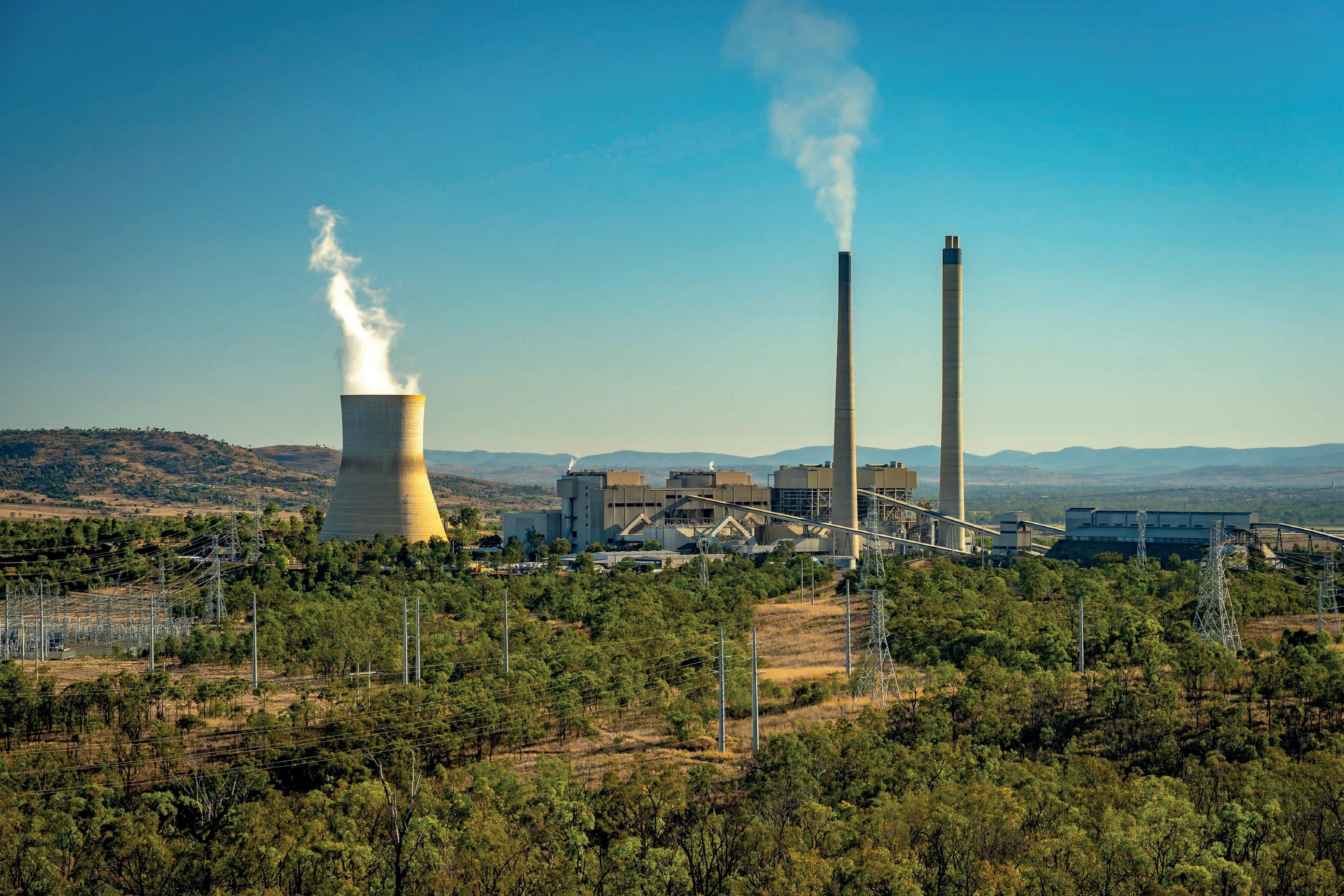
• Reliable gas supply will gradually and inevitably support a shift towards higher-value and non-substitutable gas uses, households will continue to have
a choice over how their energy needs are met
• Gas and electricity markets must adapt to remain fit for purpose throughout the energy transformation
• Australia is, and will remain, a reliable trading partner for energy, including LNG and low emission gases
In addition to the principles, the strategy also identifies actions to guide Australia forward. These include:
• Prevent gas shortfalls by working with industry and state and territory governments to encourage more timely development of existing gas discoveries in gas-producing regions
• Reduce gas related emissions by working with industry and regulators to minimise venting and flaring of methane from operations and consider further emissions reductions measures through

the government’s six decarbonisation plans. The government will also adopt a technology-neutral approach to exploration data acquisition to minimise seismic surveying where possible
• Support households and businesses through the transition to net zero by working closely with the states and territories to manage pricing impacts and the Gas Market Code
• Promote geological storage of CO₂ and support the region’s transition to net zero by releasing acreage for offshore carbon capture and storage (CCS) and establish a new initiative on regional cooperation on transboundary CCS, which will provide options for energy security and carbon management solutions for regional partners
According to the Federal Government’s analytic report, which serves to support the strategy, gas consumption is forecast to continue beyond 2050. This is due to its role as back up for peak loads and as firming in power generation. Looking past 2050, the government forecasts that gas will also be used where electrification, other renewable technologies and low emissions gases unavailable or too expensive.
As stated in the Future Gas Strategy, “Gas-powered generation GPG will underpin Australia’s electricity supply in the transition to a net zero economy. It is likely that gas will still play a role in electricity generation up to and beyond 2050.”
By providing more clarity around the role of gas in Australia’s future, the Future Gas Strategy helps address some of the
Coal-fired power stations are retiring faster than expected.
challenges and uncertainties of the energy transition facing utilities.
The variability and unpredictability of renewable generation is one of the main challenges facing utilities during the energy transition. As more and more coal-fired power plants reach retirement, there are increasing concerns around maintaining grid security and stability.
The Australian Energy Market Operator’s (AEMO) 2024 Integrated System Plan (ISP) noted that gas-powered generation is required during the energy transition. It posits that gas-powered generation will provide necessary back up with critical power supply when it is needed, both for ‘renewable droughts’ of ‘dark and still’ conditions, or to meet peaks in consumer demand.
According to the ISP, investment in gas, alongside batteries and other network

investments, will also deliver essential power system services to maintain grid security and stability.
The latest instalment of the 2024 AEMO Gas Statement of Opportunities report (GSOO) found that gas consumption is expected to decline over the outlook period to 2043, however, gas production in southern Australia is expected to decline at a much faster rate, due to rapidly depleting gas fields in Victoria’s Gippsland region. According to the GSOO, new investment in gas is required to meet demand and mitigate the risk of shortfalls and supply gaps.
The Future Gas Strategy offers industry more certainty that the Federal Government will continue to support the use of gas to meet energy needs. It means utilities can continue to rely on gas-fired power plants as a bridge technology while renewable energy sources are integrated into the grid.
There are several other challenges facing utilities during the energy transition, including:
• The need for investment in new infrastructure and technologies to accommodate renewables
• Uncertainties around future regulatory and policy changes that can affect the long-term planning and strategies of utilities and the gas industry
• The management of future energy costs while ensuring affordability for consumers
With the Federal Government expecting gas to remain in use beyond 2050, the industry has a pathway for planning and investment in infrastructure. This also means there will continue to be policy and regulatory frameworks in place to support the continued use of gas in power generation, offering utilities a more predictable environment to operate in.
With gas set to play a crucial role in balancing supply and demand, adequate storage near high demand areas will be necessary to ensure timely delivery during peak times, which means current gas infrastructure will need to be upgraded.
The strategy also notes that biomethane can be used in existing natural gas infrastructure. Infrastructure used to move gas across big distances to alleviate shortfalls may also be adaptable for low emissions gases in the future.
The Future Gas Strategy says that geological storage of CO2 has an important role in supporting the transition to net zero, with the government to continue to release offshore acreage for greenhouse gas storage as well as supporting carbon capture and storage.
Gas
Alongside the announcement of the strategy, Federal Minister for Resources and Northern Australia, Madeleine King, said, “Ensuring Australia continues to have adequate access to reasonably
priced gas will be key to delivering an 82 per cent renewable energy grid by 2030, and to achieve our commitment to net zero emissions by 2050.”
“The strategy makes it clear that gas will remain an important source of energy through to 2050 and beyond, and its uses will change as we improve industrial energy efficiency, firm renewables, and reduce emissions.
“But it is clear we will need continued exploration, investment and development in the sector to support the path to net zero for Australia and for our export partners, and to avoid a shortfall in gas supplies.”
Ms King said that gas is crucial for Australia as it supports manufacturing, food processing and refining of critical minerals which will help to lower emissions. She also said that gas supplies 27 per cent of Australia’s energy needs and represents 14 per cent of Australia’s export income.
“Gas will play an important role in firming renewable power generation and is needed in hard-to-abate sectors like manufacturing and minerals processing until such time as alternatives are viable and can be deployed.”
When it comes to planning the future energy mix, the Future Gas Strategy makes clear the Federal Government is taking an integrated approach to ensuring energy security and affordability throughout the energy transition


Combining the resources of our respected editorial team with the knowledge and insights of some of the best and brightest minds in the sector, Energy shares thoughtleading and thought-provoking content that tackles the industry’s critical questions.

Regal Rexnord has been committed to renewable energy systems globally for over 40 years.
As an OEM partner and collaborative developer to many of the world leading Wind Energy innovators and manufacturers, Regal Rexnord Oceania is in a powerful position to support the local Service, Repair and Renewal requirements of growing regional Wind Energy infrastructure. Your partner for Original Equipment products backed by stock and expertise.





